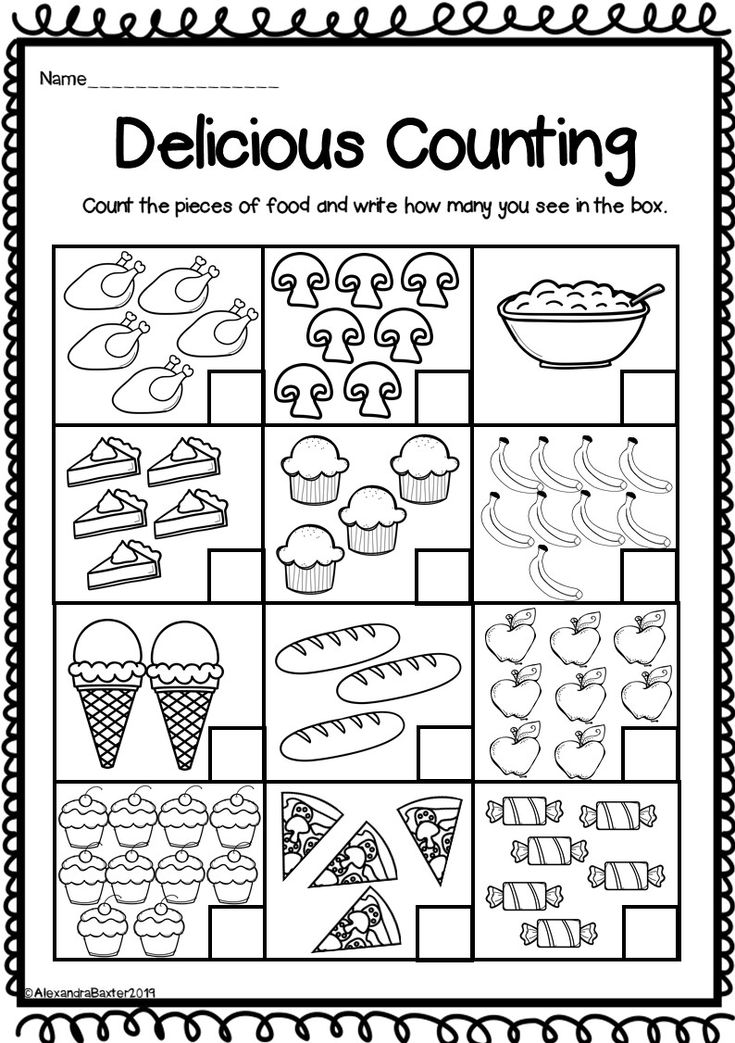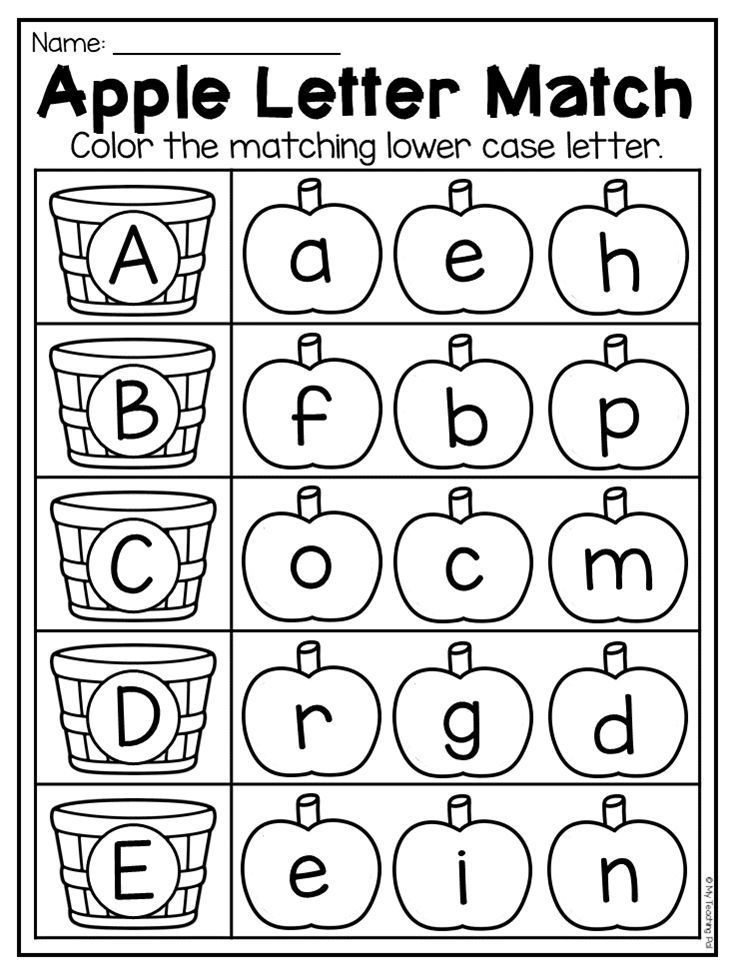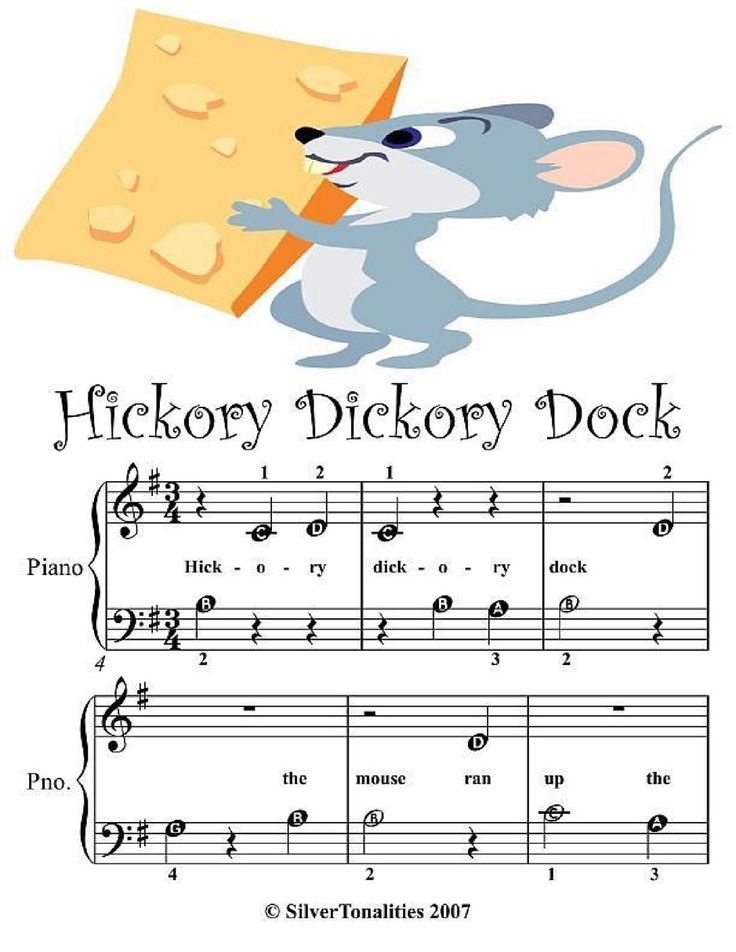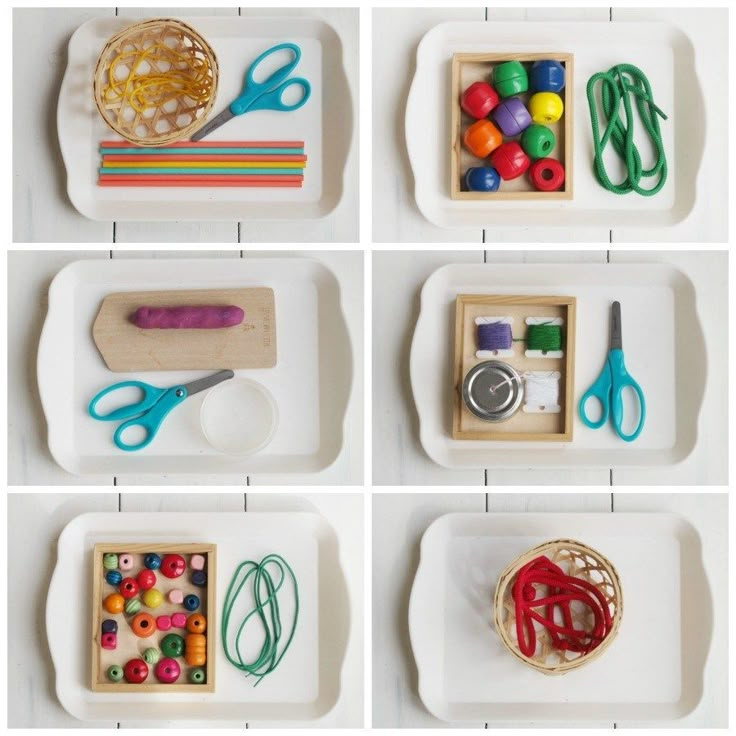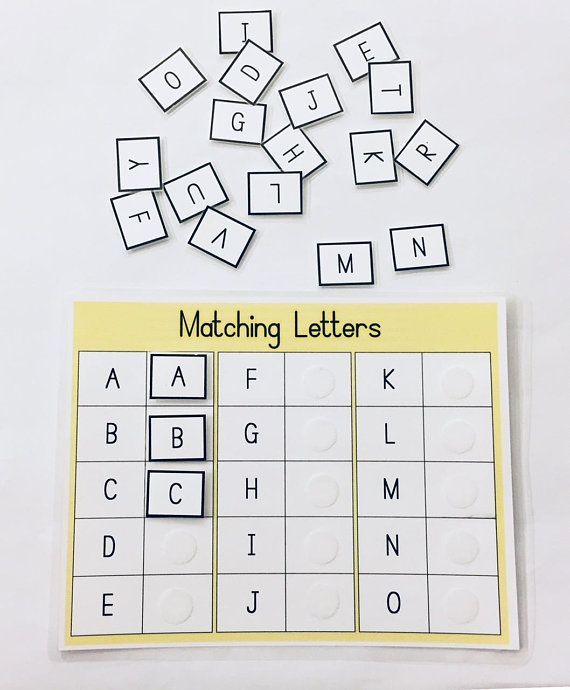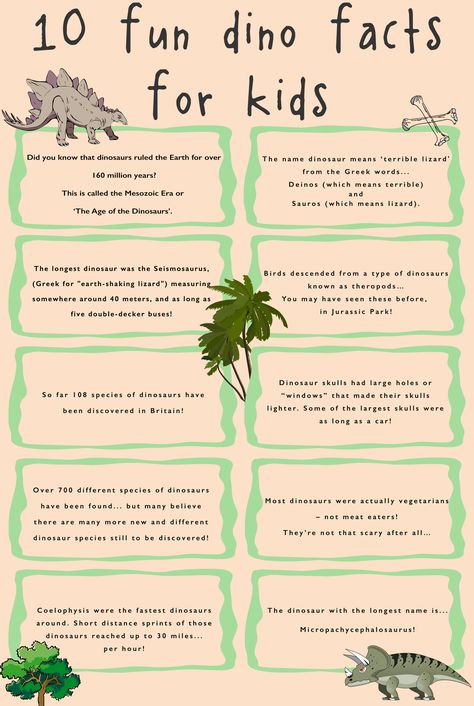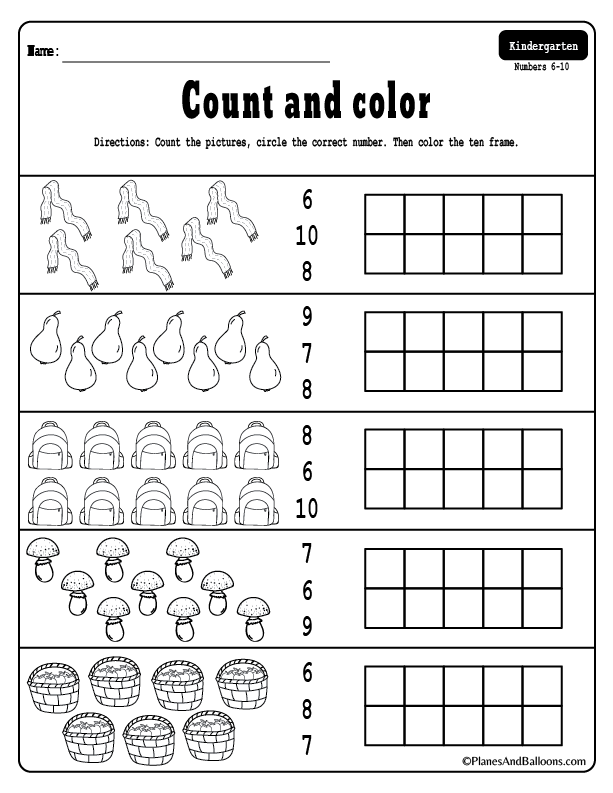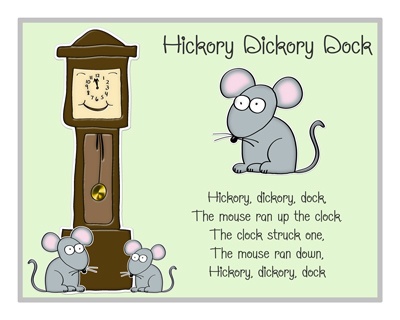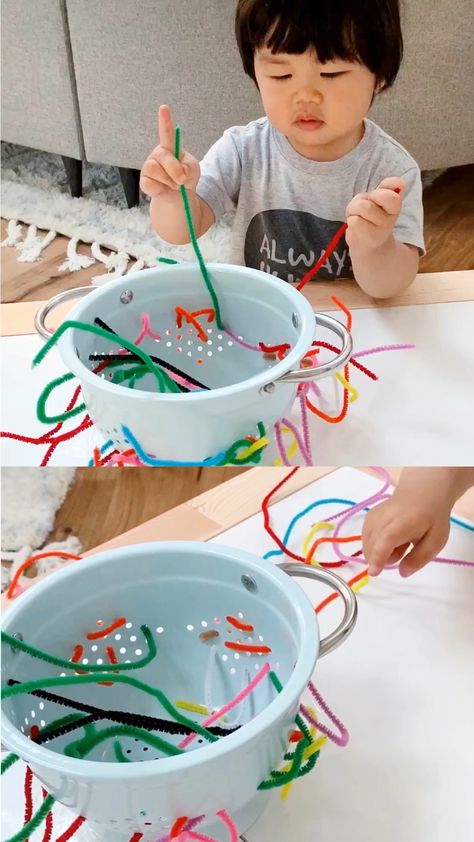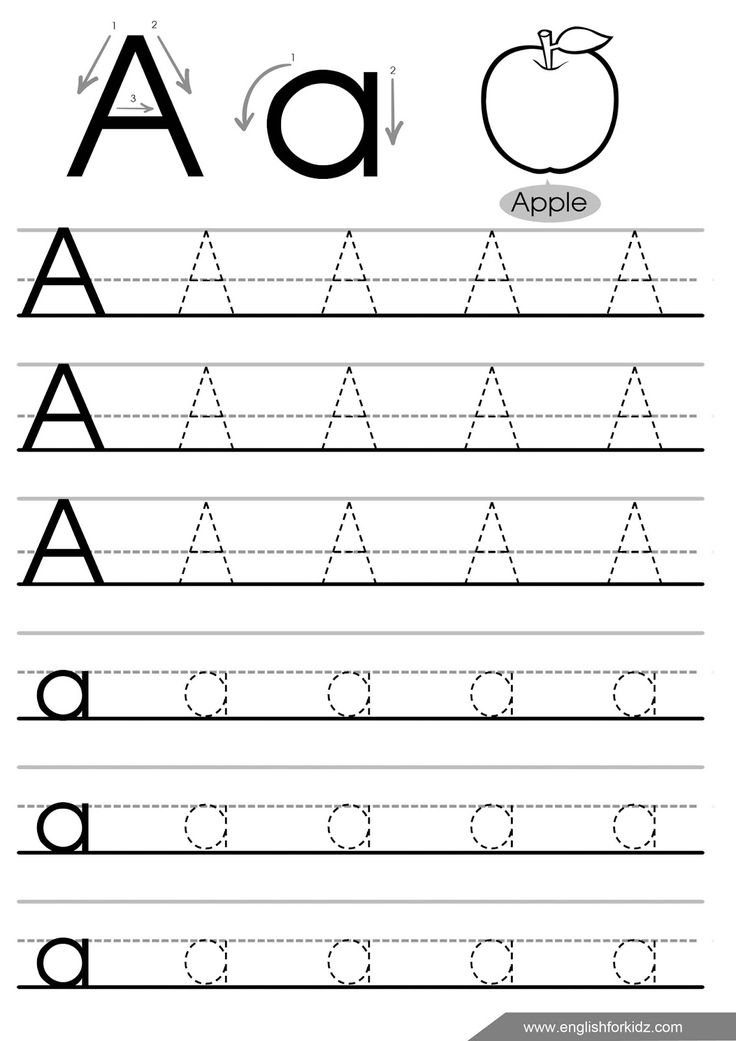Counting activities for kids
10 Fun And Educational Counting Activities Kids Can Do At Home
Watching your child enter the wonderful world of counting activities can be equal parts amazing and overwhelming. Math is a whole language in and of itself. Learning how to read and “speak” math will take time!
But have no fear — HOMER is here with 10 fun, educational, and exciting counting activities to make your child’s math learning feel less like a roller coaster and more like a walk through the park.
10 Counting Activities To Try At Home
1) Count The Pattern
What You’ll Need
- A piece of paper
- A pen for tracking tallies
What To Do
This counting activity can be done inside your house on a rainy day or during a walk around the neighborhood. All you’ll need is your paper, pen, and sharp eyes.
For our example, we’ll go on a nature walk. You will start by saying, “I spy with my little eye something [color] … how many can you find?” To start, we’ll use the example of yellow objects.
Hearing your hint, your child will rush around to count how many yellow flowers, coats, signs, cars, or other objects they can find.
For young kids, their goal can be to find as many yellow items up to 10 as fast as they can. If your child is a little older, their goal can be 20.
You can also switch it up by exchanging the color for other objects. For example, they can try and count the number of dogs, fire hydrants, sidewalk cracks, or birds flying by.
2) Counting Cityscape
What You’ll Need
- Legos or building blocks
- A pair of dice
- Sticky notes
- Pen or marker
What To Do
For this activity, your child will start by rolling the dice.
They’ll count the dots of whatever number they roll and then stack the matching amount of building blocks into a tall tower. Then, they’ll write out the number of blocks on a sticky note and stick it to the top of their tower like a flag.
This will showcase a couple of different things to your child: one-to-one correspondence and subitizing.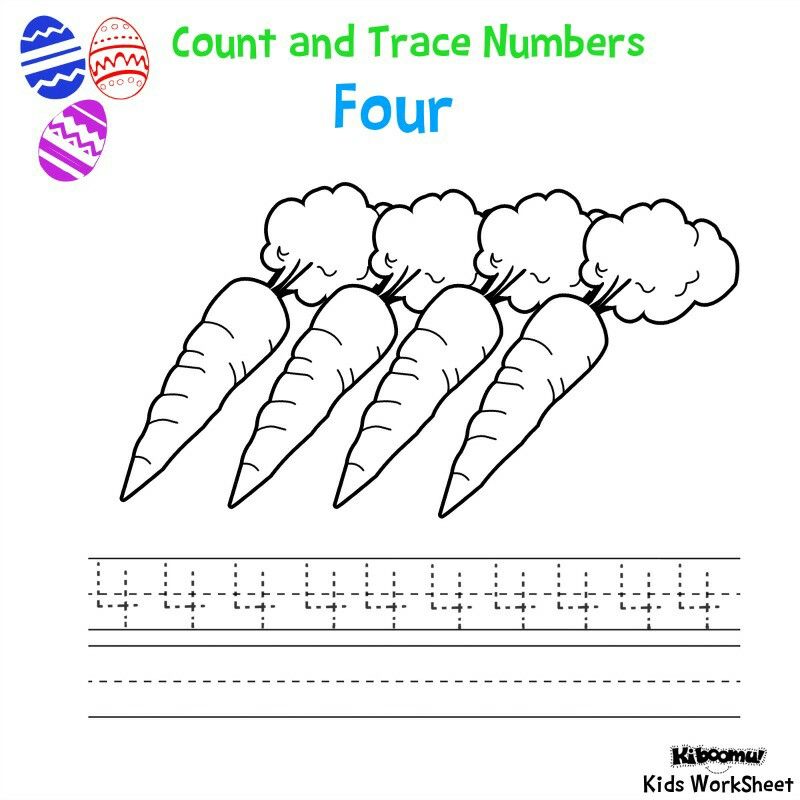
Subitizing refers to a child’s ability to see a small collection of objects and innately understand how many there are without meticulously counting. Subitizing works when reading dice as well.
Encourage your child to repeat this process a few times so they begin to build their own cityscape. If all of their numbers are correct, their reward will be to play King Kong and smash it all down!
3) Ice Cream Cone Counting
What You’ll Need
- 5 triangle-shaped paper cut-outs (for the cones)
- 15 different-colored circles (for the ice cream)
- Glue or tape (if you want to preserve their work!)
- A sheet of paper with numbers 1 – 5 written across the bottom
- Leave lots of space in-between!
What To Do
The next best thing to real ice cream cones? Making your own crazy flavors out of paper!
Your child will use the number line on the paper to guide their ice cream assembly. So, for the 1 space, your child will place one ice cream cone and the number of scoops matching the spot on the number line.
They’ll continue up the number line, making ice creams with 2, 3, 4, and eventually 5 scoops. That’s one big ice cream cone! For older kids, you can bump this activity up to 10.
You can take this activity further by turning your ice cream making into a business! Your child can play shopkeeper and you can puppeteer different stuffed animals to come in and order.
Your child will make ice cream cones based on their fuzzy customers’ requests!
4) Penny Toss
What You’ll Need
- 10 pennies
- A plastic cup or jar (for shaking)
- A piece of paper
- A pen
What To Do
Place the pennies in your shaker jar. Tell your child to shake them all around before turning them upside down and throwing the pennies down onto the floor.
You will be playing against one another: one person for heads and one person for tails.
Then, they’ll take a tally of how many pennies land on heads vs. tails. They’ll count their tallies and circle which one got more in each round.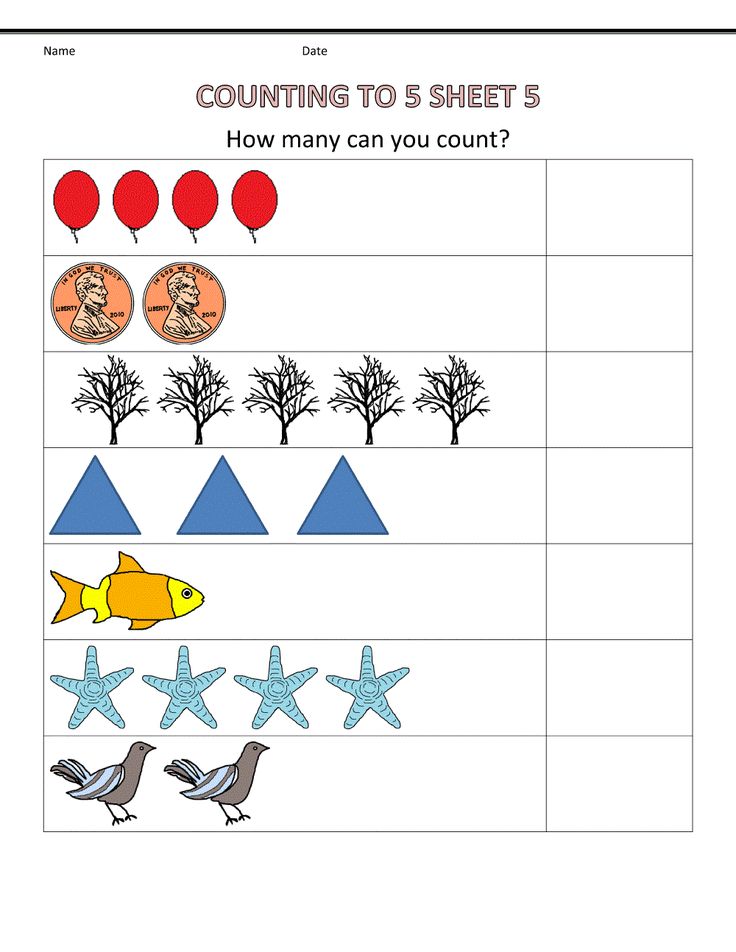 The first person to have “their side” of the penny reach 20 wins!
The first person to have “their side” of the penny reach 20 wins!
5) Fill The Cup
What You’ll Need
- Popcorn or other light but bulky snack
- 2 plastic cups
- A pair of dice
What To Do
You and your child will each have your own plastic cup and a die.
You’ll start by rolling your die one person at a time. Whatever number you get, you’ll count that many pieces of popcorn into your cup. The idea is to see whose cup fills up first!
The players all get rewarded by eating their whole cup of popcorn at the end. What’s better than snacktime and math time?
6) Number Maze
What You’ll Need
- Chalk
- Sunshine (this activity is done outdoors)
- A stack of cards (face cards removed)
What To Do
You’ll use your chalk to draw out a grid. You can draw the grid in any form you like, but there should be at least 10 blocks. For more advanced counters, you can expand to 20 blocks.
When filling up the grid, you’ll want to mix and match the placement of the numbers. You don’t want to write them in an obvious sequence, as that will defeat the purpose of the game.
You will be the road map for how your child will get out of the maze. Your child must “escape” the maze by hopping between the numbers you call out.
You’ll call out numbers based on whatever card you draw from the pile. There’s no need to do all 40 cards! Start with 10 cards (all 10 numbers) and if your child really enjoys the game, then try 20.
7) Swat That Number
- What You’ll Need
- A fly swatter
- Sticky notes
- A marker
What To Do
Write numbers 1 – 10 (or more if your child is learning larger numbers) onto separate sticky notes. Stick them to a wall with a wide space in front of it so there’s room for your child to play.
Call out a number or roll a die. Whatever number is chosen, your child must swat the corresponding sticky note with the fly swatter as hard as they can.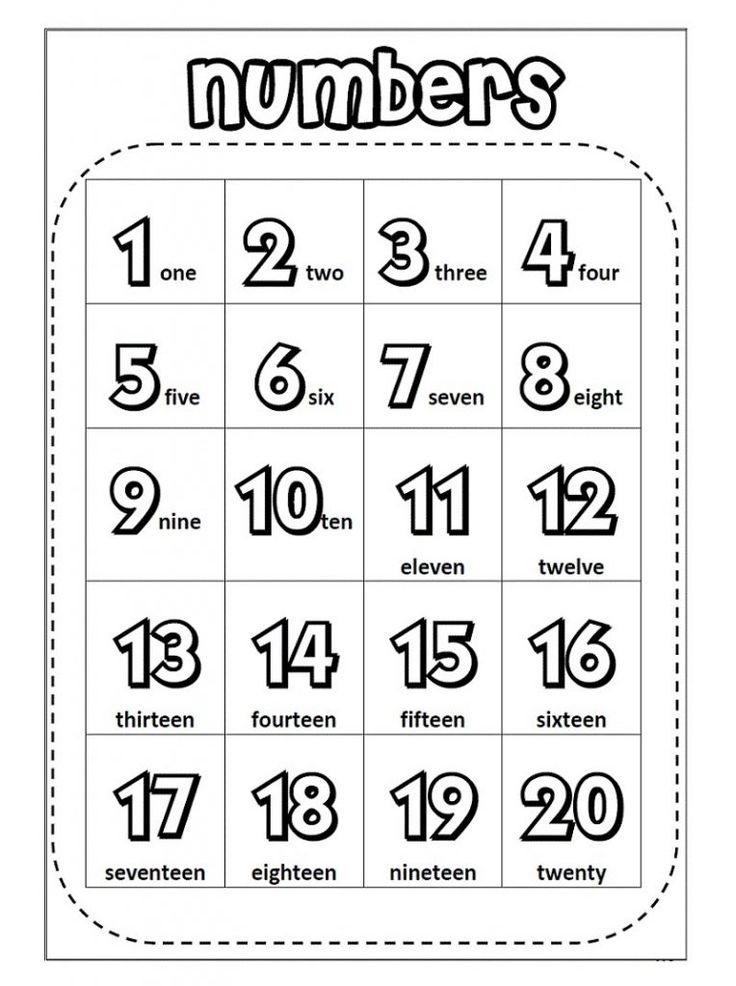
This counting activity will get them moving, thinking, and having a blast!
8) Planting With Numbers
What You’ll Need
- 10 small cups, numbered 1 – 10
- Clear cups work best
- Seeds for a quick-growing plant
- Snap peas
- Radish
- Squash
- Soil
What To Do
Fill each cup with an appropriate amount of soil. Then, based on the number on each of the cups, your child will plant the same amount of seeds into the labeled cups until all the cups are filled.
The best part? They’ll get to watch their seeds flourish over the next couple of weeks!
They can make their own determinations about which cups grew the best. Were the seeds in the 10 cup too crowded? Were they the perfect amount? You’ll have to wait and see together!
9) Counting With PlayDoh
What You’ll Need
- PlayDoh
- Cutouts of numbers 1 – 10 (or plastic fridge magnets)
- Toothpicks (for kids four and up)
What To Do
For this activity, your child will be making some “spiky” PlayDoh hamburgers.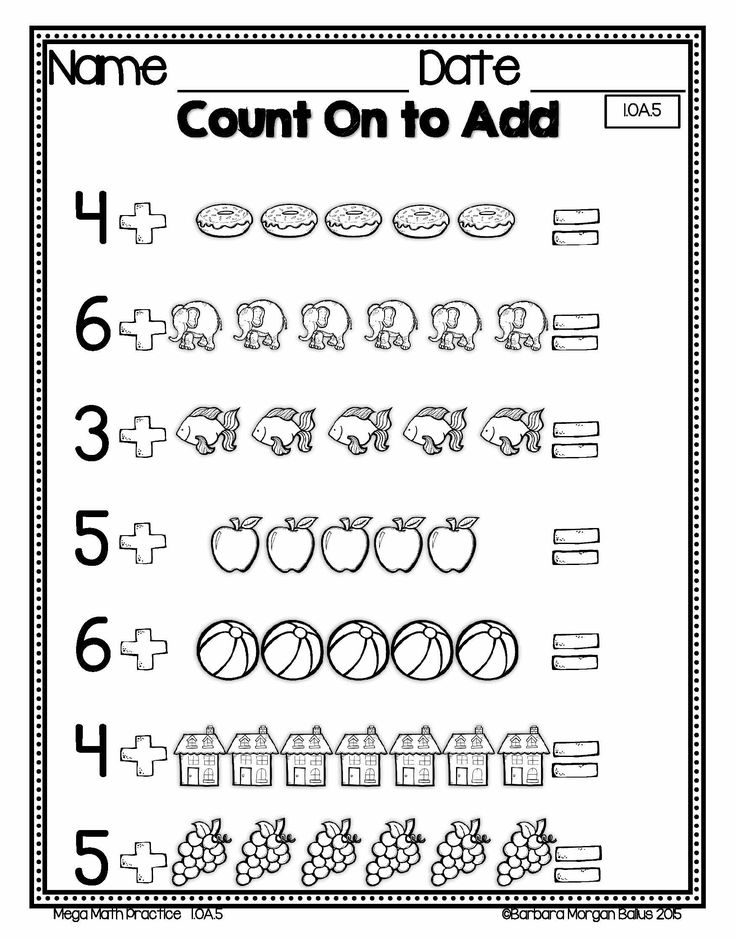 They’ll form the PlayDoh into 10 separate patties. The color, shape, and size are up to them!
They’ll form the PlayDoh into 10 separate patties. The color, shape, and size are up to them!
With the finished patties, they’ll press a number 1 – 10 into each patty. Then, depending on the patty’s number, they’ll add that many spikes (toothpicks) to it, continuing until all of the patties have the correct amount of toothpicks.
Bon appetit!
This activity helps your child see the relationship between the face value of a number and how many objects it represents.
Quick tip: You may want to avoid using toothpicks if your child is younger than four years old. You can use buttons or other small objects instead.
10) Number Olympics
What You’ll Need
- A pair of dice or number spinner
What To Do
This game is a great way to have your child learn and burn some energy at the same time (we know you’ll thank us later!).
You will use the number spinner or dice to roll a random number. That number will dictate how many of a certain athletic move your child will complete.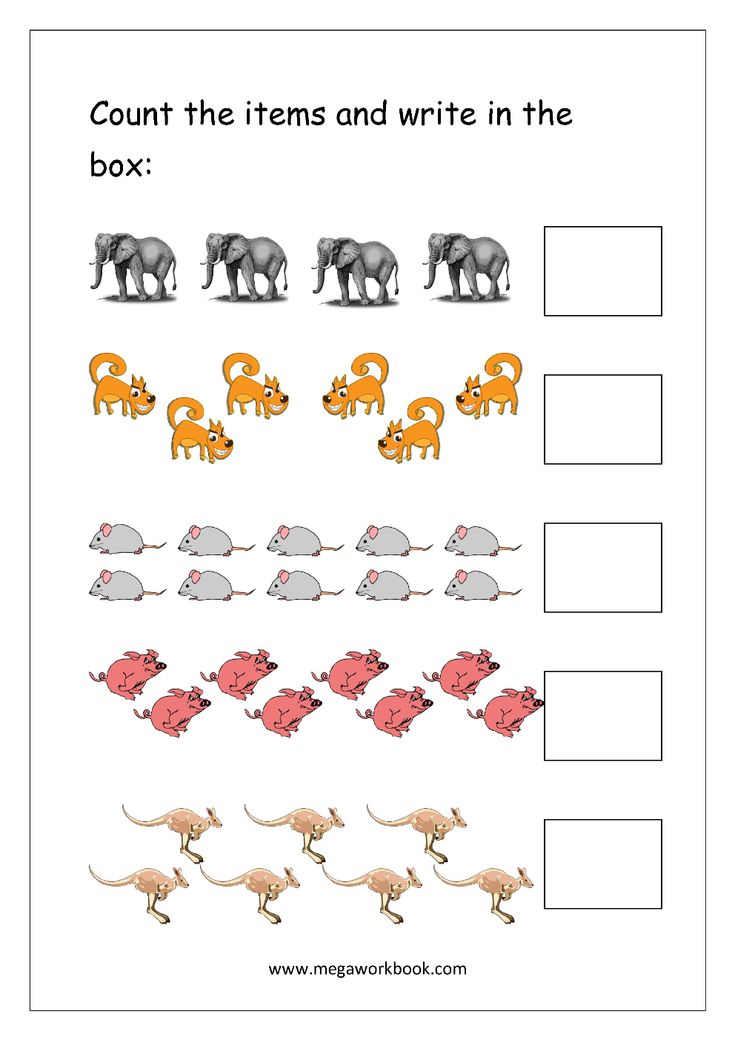
You can use any move that gets your child excited to play — jumping jacks, squats, log rolls, spins, etc.
You can even take the game outside. For example, your child could do a certain number of jumps on the trampoline or have to score a basketball goal a certain number of times.
Get creative, get jumping, and get counting!
Counting Activities For Endless Fun
We hope these counting activities sparked your imagination for ways to make math exciting and fun for your child.
As your partner in learning, we at HOMER know that there will be weeks when there’s just not enough time in the day to grow snap peas or build Lego cities. For those extra busy days in your routine, our personalized learning center is full of counting activities for your child.
Your young learner doesn’t always have to play a complex game to develop their math skills. Our Learn & Grow App will make sure that they get there (and have a blast while doing it!).
Author
30 Hands-On Counting Activities for Kids -
Skip to content
Preschool/Pre-K
Some kids (and adults too!) have negative feelings about math.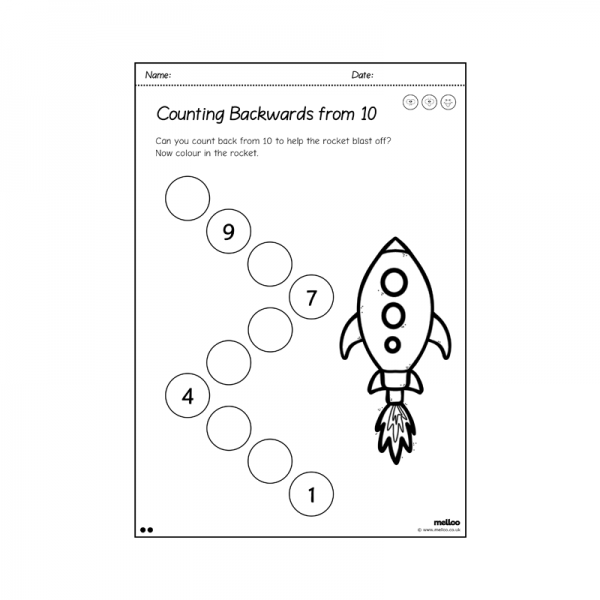 It can seem abstract and difficult. But there are lots of fun ways to make it less intimidating. Starting with the very basics, using play and activities there are lots of hands-on counting activities for kids! We’ve done so many activities to teach counting! There are way too many to list them all but here are a few of our themed favorites.
It can seem abstract and difficult. But there are lots of fun ways to make it less intimidating. Starting with the very basics, using play and activities there are lots of hands-on counting activities for kids! We’ve done so many activities to teach counting! There are way too many to list them all but here are a few of our themed favorites.
30+ Hands-On Counting Activities
More Counting Activities
Below you’ll find some of the best ideas to include counting skills within other activities like games, crafts, stories and sensory play.
Hands-On Counting Activities and GamesMath Caps: A Math Facts Game from Mosswood Connections
Get a full-year of math activities
A full-year of kindergarten math activities: perfect for small groups, partner activities and independent centers.
12 Skill Packs
20+ Activities each
Full Color
Black/white
differentiated
low-prep
click to get the kindergarten math bundleEasy Preschool Watermelon Counting Game from Homeschool Preschool
Spider Web Number Lacing Activity from Artsy Momma
Fine Motor Activity: Turkey Feather Counting from Artsy Momma
Nuts and Bolts More or Less Game from Preschool Powol Packets
Flower Counting Activity from Teaching 2 and 3 Year Olds
Counting Game for One-to-One Correspondence from Buggy and Buddy
Contact Paper Fall Tree Counting Game from Simple Fun for Kids
Felt Leaf Number Line Activity from Something 2 Offer
Foam Cup Construction with Numbers from Simple Fun for Kids
Simple Montessori Counting Activity from My Mundane and Miraculous Life
100 Items to Use to Count to 100 from Edventures with Kids
Learning to Count with Pipe Cleaners from School Time Snippets
Hands-on Preschool Counting with Rings on Fingers from School Time Snippets
Skip Counting Activities from What Do We Do All Day
Gross Motor Counting Activities
Teach Counting with a Stair Jumping Game from Homeschool Preschool
Teach Counting with Simon Says from Homeschool Preschool
Gross Motor Math Game: Counting Action Dice from Buggy and Buddy
Hands-On Crafts for Counting
Recycled K Cup Frog Craft and Counting Activity from Artsy Momma
Spider Counting Craft from Teaching 2 and 3 Year Olds
Pretend Play for Counting
Preschool Math Activity with Bear Counts from Teaching 2 and 3 Year Olds
Personalized Felt Counting Set with Ten Apples Up On Top from Buggy and Buddy
Pretend Play and Number Recognition from My Mundane and Miraculous Life
Counting 1 to 5 with 5 Little Ducks from Red Ted Art
Hands-On Sensory Activities for Counting
Exploring Numbers with Playdough from Simple Fun for Kids
Dinosaur Sensory Bin: Counting and Math from My Mundane and Miraculous Life
Our Favorite Counting Books:
We can’t live without these!
Once your child’s creativity is sparked with this fun activity, take it a step further with these engaging resources:
As an Amazon Associate I earn from qualifying purchases.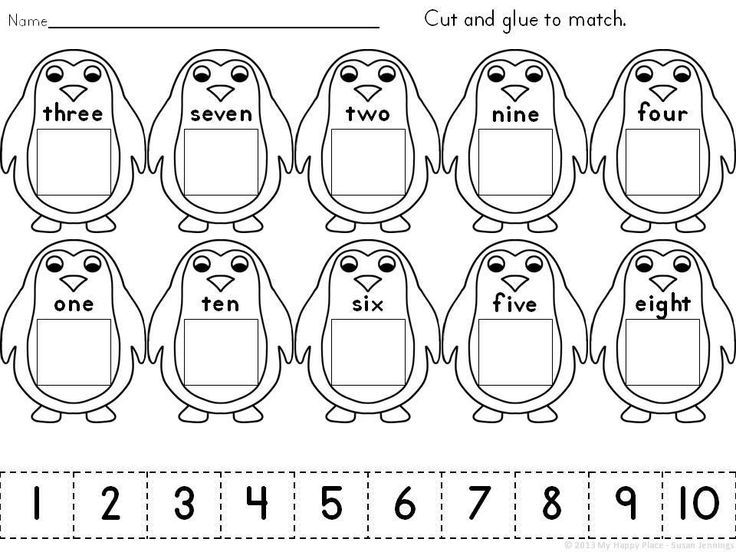
Easy Product Displays
Counting Animals on the Farm: Counting book for kids, Learn numbers from 1 to10, Counting Animals Counting Crocodiles Ten Black Dots Hand, Hand, Fingers, Thumb (Bright & Early Board Books) Curious George Learns to Count from 1 to 100 Big Book Chicka Chicka 1, 2, 3
Products here
More from our Shop
TO THE SHOP
Find even more engaging activities in the Life Over C’s shop!
With a little creativity math doesn’t have to be intimidating at all. These hands-on counting activities are sure to be a hit!
More Activities You’ll Love:
Similar Posts
Scroll to topLesson 3. Preparing for counting for the little ones: tips, activities, games, books
Any child can be taught to count.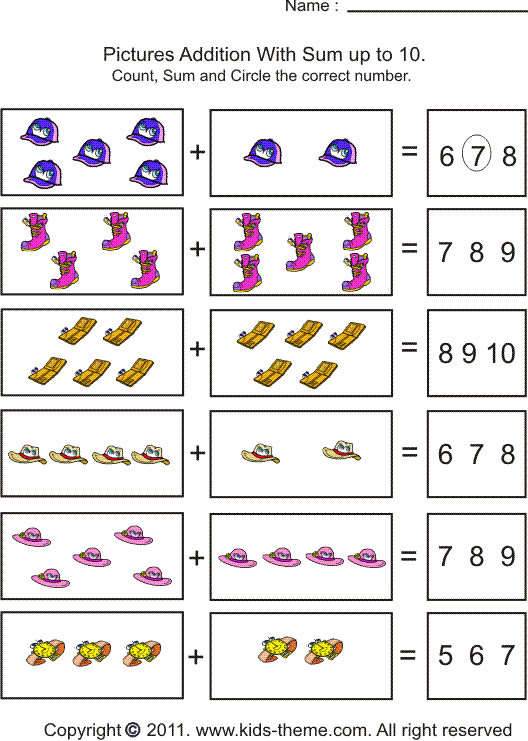 The only question is how to do it. Despite the fact that counting (including quick calculations) is not a serious difficulty, some children are given it almost in the blink of an eye, while others understand the information with difficulty. Not knowing how to convey seemingly elementary things to the baby, some parents resort to all sorts of tricks, while others give up altogether. In the matter of the full-fledged upbringing and development of the personality, neither one nor the other is completely suitable, and there is only one way out of the situation - to know how, when and what to do. We will talk about this. nine0003
The only question is how to do it. Despite the fact that counting (including quick calculations) is not a serious difficulty, some children are given it almost in the blink of an eye, while others understand the information with difficulty. Not knowing how to convey seemingly elementary things to the baby, some parents resort to all sorts of tricks, while others give up altogether. In the matter of the full-fledged upbringing and development of the personality, neither one nor the other is completely suitable, and there is only one way out of the situation - to know how, when and what to do. We will talk about this. nine0003
Contents:
- Peculiarities of learning to count babies
- Initial steps for teaching children to count
- Tasks for the little ones in pictures
- Children's educational games
- Educational literature for children
Peculiarities of teaching kids to count
First of all, it should be said that a child's memory has one special property - selectivity.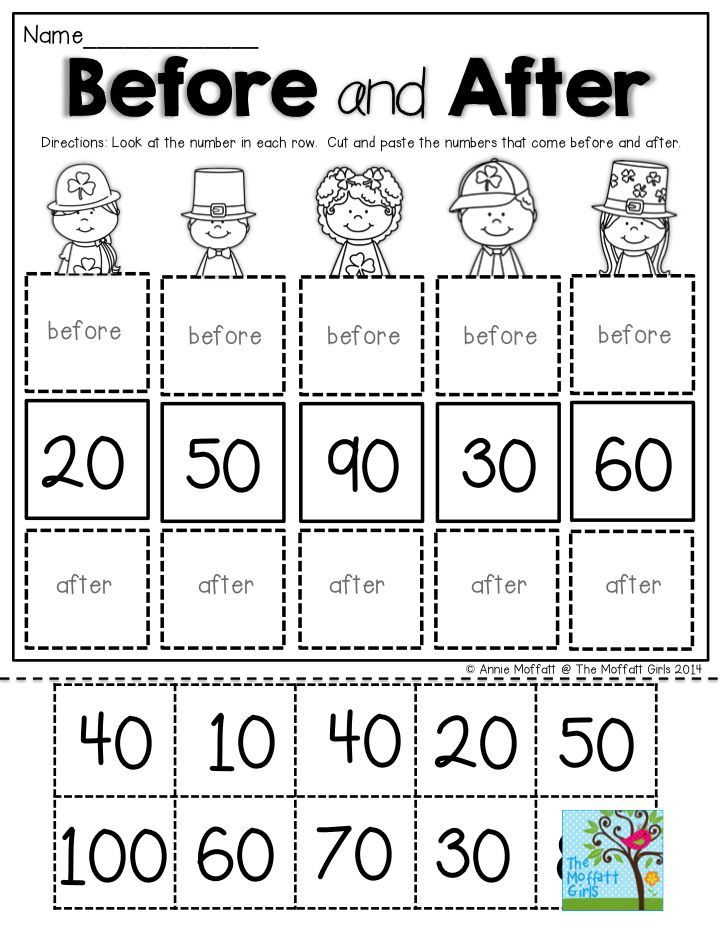 Therefore, children learn some skills on the fly, without making any effort, and with others, as they say, they have to “tinker”. nine0003
Therefore, children learn some skills on the fly, without making any effort, and with others, as they say, they have to “tinker”. nine0003
It is important to know and always keep in mind that many things cause children to associate with emotional sensations, such as joy, fear or surprise. It is possible to teach a child to count competently and quickly only when this process will also cause him emotional reactions (positive, of course) and interest.
At first, you should make every effort to get your child interested in counting, numbers and numbers. If this is done successfully, even the most fidget will be able to master the skill. A huge plus is that while the development of reading and writing in most cases requires intensive work with notebooks and books, then with the account all this can be relegated to the background. By the way, an interesting fact: thanks to scientific research, it was possible to establish that when studying any language, children remember numerals best of all.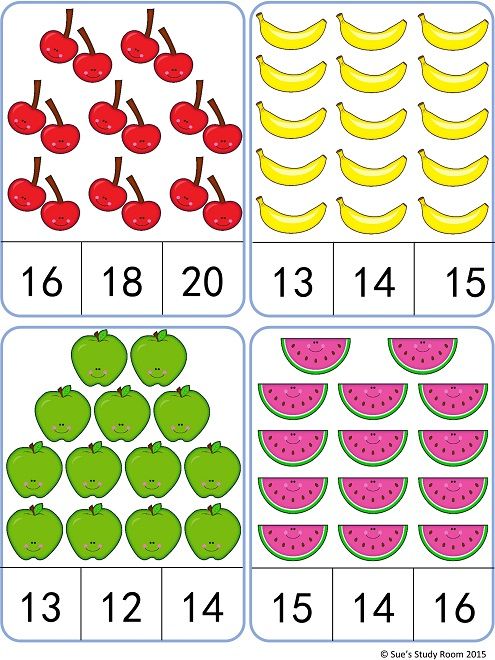 But let's continue. nine0003
But let's continue. nine0003
You can start training from the first months of your baby's birth. Of course, this cannot yet be called a full-fledged training - it is rather a preparation. In the period up to about two years, you can play fingers with your child, hum all kinds of songs and counting rhymes, so that the child's consciousness fixes that there are generally such "things" as numbers and numbers. When the baby is two years old, you can move on to more specific methods and techniques. We’ll talk about the methods a little later, but for now, let’s briefly dwell on how to behave with the child in terms of the issue we are considering. nine0003
Getting started in teaching children to count
So you've decided to start teaching your child to count. It's time to get started.
First you need to teach the child the simplest number sequence, consisting of five numbers. Remember that almost everything in life can be calculated. Watch a cartoon - count the number of characters on the screen, dress the baby on the street - pay attention to the wardrobe, and tell him that you can only wear one coat on him, that he has two legs, but only one pair of shoes is put on them.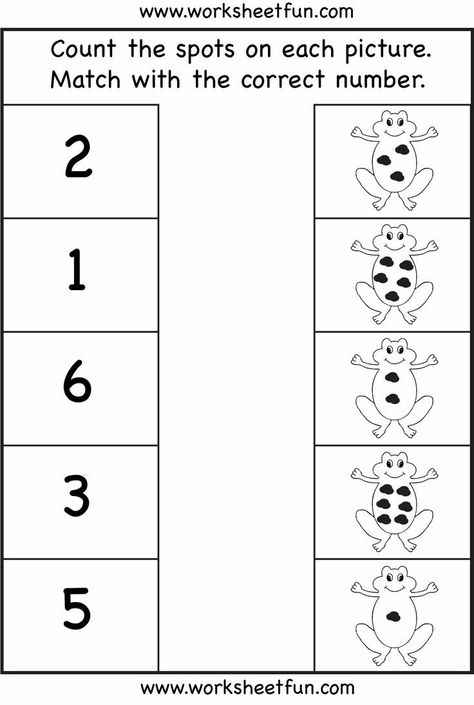 nine0003
nine0003
When reading a book, linger on the illustrations longer, count the number of elements depicted in it, animals, little men, houses. When you walk down the street, count the dogs and cats running by, the cars passing by. Doing this every day, and even at every opportunity, your little miracle will definitely learn the order of counting. In addition, auditory and visual memory, as well as attention, will develop.
When a child gets acquainted with numbers and counting, he must understand that he is performing some actions or tasks not because you ask him to, but because it will be useful to him. Show the kid the practical benefits of the ability to count, and then giving out two cookies to everyone at home will not be difficult for him. nine0003
Involve your child in household chores as often as possible. For example, when you are going to have dinner, ask him to serve you a specific number of glasses, plates or cutlery. While cooking, explain that a specific amount of ingredients is required to prepare a particular dish, otherwise the dish will not work.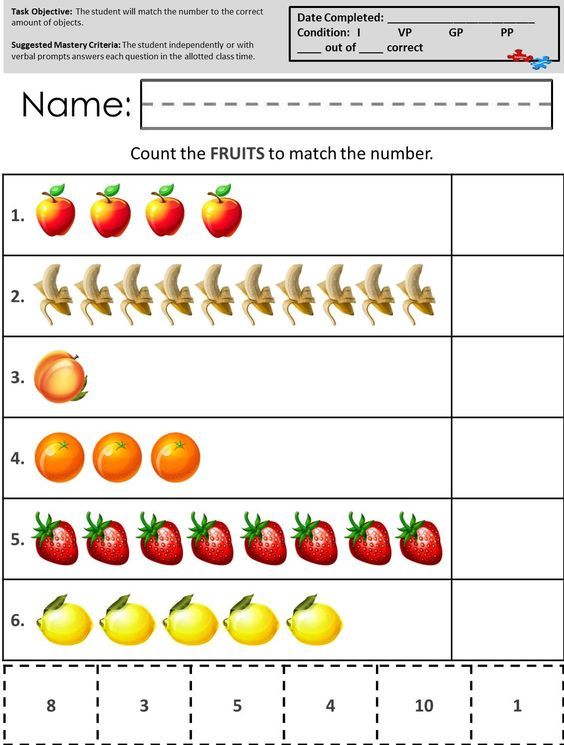
Dust the bottom shelf - draw a number with a rag and ask the young mathematician to tell you. You can even write an example and then present its solution. Walking around the store will also be a great way to exercise for the baby. Make a grocery list with the baby, clearly pronouncing the amount of everything you need to buy, and bending your fingers on the handles. Let the baby try to remember the information, at least a couple of lines. nine0003
Already at the store, remind your tiny assistant that he has to help you and refresh the shopping list in his head. This will activate his brain centers, which means that he will learn to count faster. In addition, you will show the baby that you cannot do without him, and, realizing his importance, he will show more eagerness to help you.
And wind on one important rule: all your actions will not bring any result if you do them randomly. In the matter of training, regularity and perseverance are important. By systematically studying with your child, inventing new forms of elementary everyday learning to count, you will achieve high results.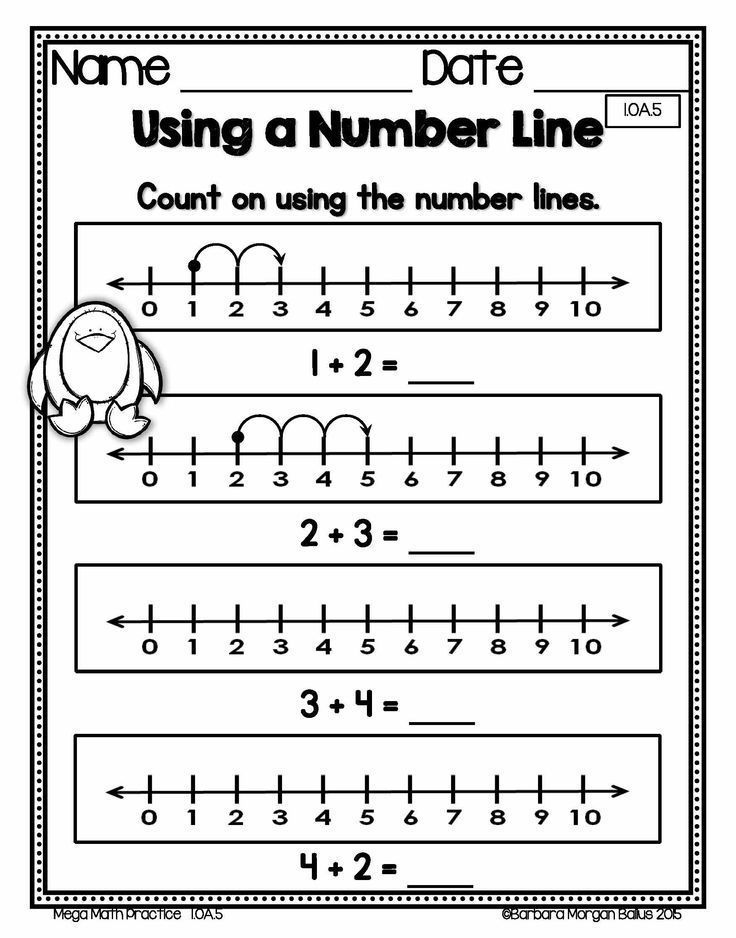 nine0003
nine0003
Now let's get acquainted with more systematic methods of teaching children to count, namely: tasks for the smallest in pictures and children's educational games. Let's start with pictures, because. they are the easiest to work with.
Tasks for the little ones in pictures
Tasks related to pictures are very common and very popular. We offer you a small list of those and brief instructions for use:
- Special cards for learning to count and study mathematical symbols. You can find them in any bookstore in a large assortment. You just need to show such cards to the child, explain what is shown on them, and use them to illustrate the performance of mathematical operations. nine0010
- Pictures with images of various objects. They can not only be counted, but also painted and compiled in the correct sequence. You can buy didactic material in the store, or you can make it yourself (we recommend the first option).
- Images that involve matching pictures and numbers.
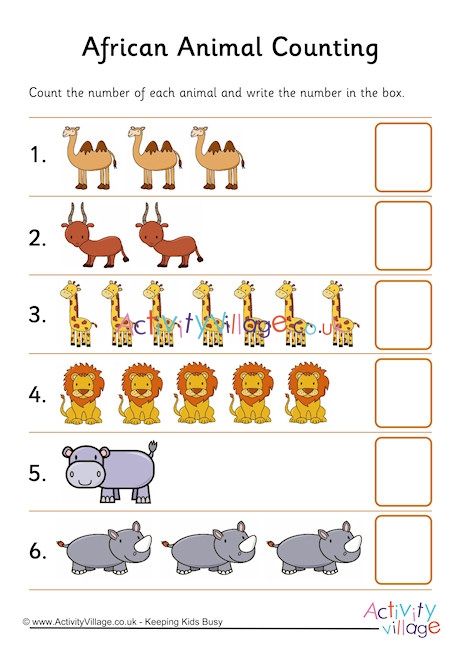 It is very simple to use: the kid looks at the picture, determines the number of objects and draws a line with a pencil to the corresponding number. Collections of similar images are also available in bookstores. nine0010
It is very simple to use: the kid looks at the picture, determines the number of objects and draws a line with a pencil to the corresponding number. Collections of similar images are also available in bookstores. nine0010
- Pictures of different objects and you want to determine the number (little or many), size (small or large) and height (high or low).
- Images with specific tasks, such as walking through a maze, finding the same items, finding differences, etc.
Toddlers are very fond of tasks with pictures, because they are funny, cheerful and colorful. But for you, as teachers, it is more important that they clearly show the child what is what, thanks to which he easily remembers the material, understands the meaning of his actions and can explain it to you. Be sure that the kid will look forward to each new lesson with pictures. nine0003
Children's educational games
We will not surprise you if we say that the best form of learning for children is the form of play.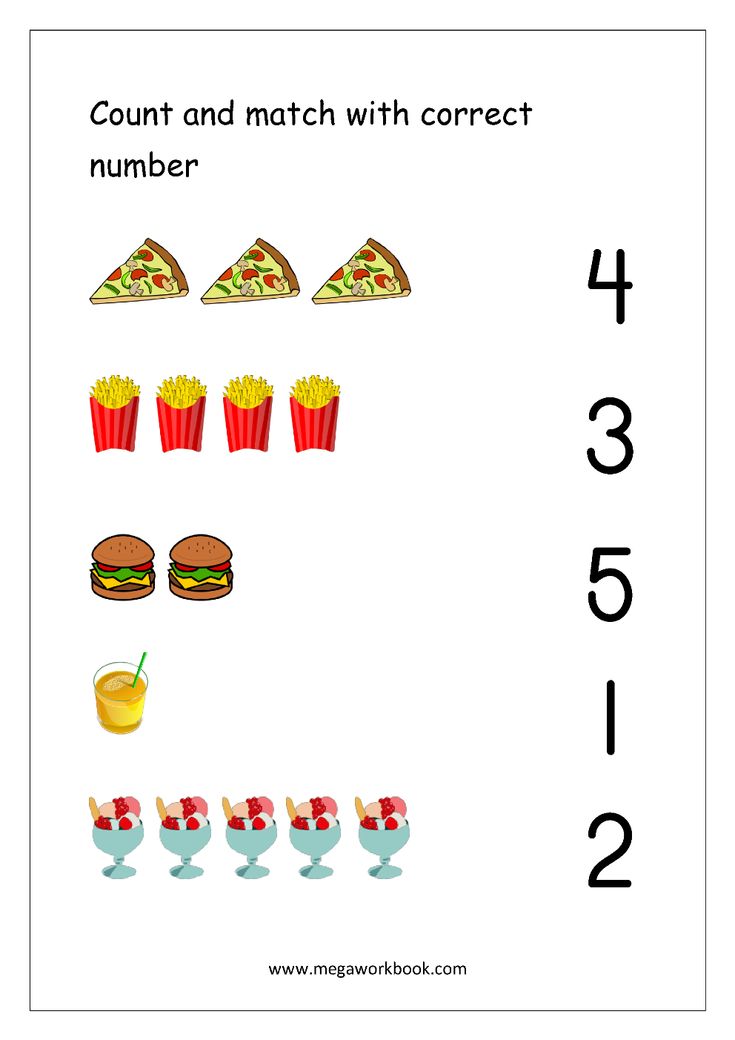 If you build the learning process based on the game, the child will be involved and interested in it. And even numbers that may seem boring will delight and bring pleasure. But we want to introduce you not to simple games, but to interactive ones, i.e. with those that you can safely download and install on your computer or tablet, or simply open on the Internet. nine0003
If you build the learning process based on the game, the child will be involved and interested in it. And even numbers that may seem boring will delight and bring pleasure. But we want to introduce you not to simple games, but to interactive ones, i.e. with those that you can safely download and install on your computer or tablet, or simply open on the Internet. nine0003
1
The game "Masha and the Bear answer questions"
A very exciting and colorful game where the kid will have to be smart and use the ability to add and subtract. The bottom line is that a small player must help Masha give the correct answers to mathematical questions. By doing this, he will help her get to visit her grandparents. If the child answers incorrectly, the bear sits on a stump, preventing Masha from passing. You need to give as many correct answers as possible. nine0003
2
The game "Math with Luntik"
Luntik is one of the favorite cartoon characters of children. If your little one plays this game, he will quickly learn to add numbers up to ten.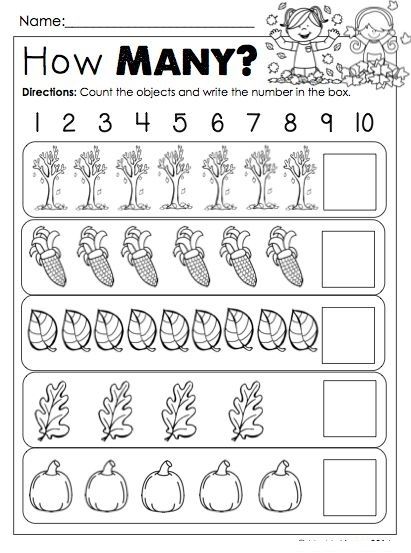 With the correct answer, Luntik rejoices, and with the wrong answer, he is sad. Tasks in the game like this: Luntik writes an example with a plus sign, and the player must find the correct answer (several options are offered). The game is accompanied by pleasant music that helps the baby to concentrate.
With the correct answer, Luntik rejoices, and with the wrong answer, he is sad. Tasks in the game like this: Luntik writes an example with a plus sign, and the player must find the correct answer (several options are offered). The game is accompanied by pleasant music that helps the baby to concentrate.
3
Bouquet game
The meaning of the game is as follows: flowers bloom in the garden, which you want to put in vases. The player is given three vases with different numbers. In each vase you need to put the appropriate number of flowers. So, while happily manipulating virtual objects, your child will quickly learn to identify numbers and correlate them with the number of objects.
4
Piggy treats game
Another wonderful toy, the main characters of which are Piggy and his friends. The task of the game is to properly distribute treats to guests. For example, you need to help Piggy to share the nuts for everyone. There is a number next to the plate of each guest, and the correct number of nuts should be put on each plate.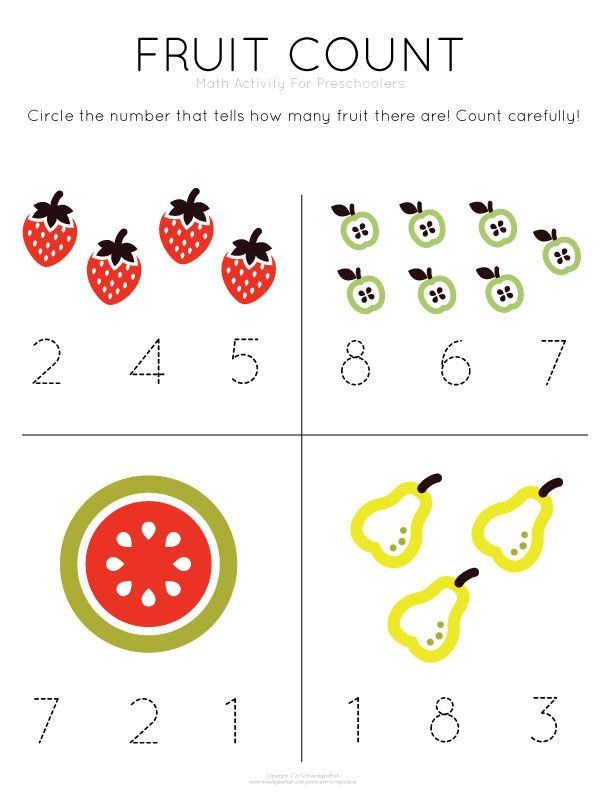 The interface of the game is designed so that the child can easily learn to count and memorize the images of numbers. nine0003
The interface of the game is designed so that the child can easily learn to count and memorize the images of numbers. nine0003
5
Animal Count Game
This game is suitable for toddlers who can count to five. Your child is presented with four pictures and one number, and he must find the picture, the number of animals in which corresponds to this number.
By and large, you can find a lot of similar games. All that is required for this is to type the desired request on the Internet. But games, of course, should not be limited, because they should be only an accompanying element of classes. In addition to them, we strongly recommend that you do not neglect children's poems and rhymes that activate children's thinking and make it more flexible. Be sure to connect the numbers when your beloved gold draws, paints, sculpts from plasticine or cuts something. And don't forget about children's books that contain counting tasks, drawings of numbers, simple examples, and other attributes of mathematics.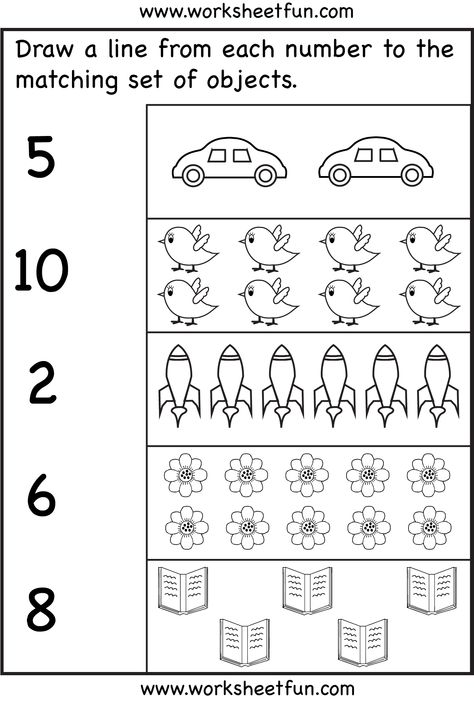 nine0003
nine0003
Speaking of literature, at the end of the lesson we want to present some good teaching aids that will help you learn many interesting features of the process of teaching children to count and build the process even more effectively.
Educational literature for children
A variety of manuals are used today to teach kids to count. As a rule, they describe all kinds of techniques that develop mathematical abilities, memory and attention, logic and thinking in general, and also allow children to instill a love of mathematics. nine0003
Given that there are a lot of such manuals today, you need to find one that will be of interest to you and your little one. Therefore, you need to be prepared to spend some time studying thematic literature (if, of course, you have a desire).
We offer you a small list of excellent books that you can choose without fear that time will be wasted:
- Alla Kharchenko “Mathematics for kids. I count to 10" nine0009 Daria Denisova "Mathematics for kids"
- Svetlana Gavrina "Mathematics for the little ones"
- Alexander Zvonkin "Kids and Mathematics"
- Elena Kolesnikova "Mathematics for children 3-4 years old"
- Elena Bakhtina "Mathematics for kids from 2 to 5"
In the fifth lesson you will learn a little more about how to work with preschoolers, how to introduce the child to the world of numbers and the composition of the number, and some simple tasks that can be given to children to solve.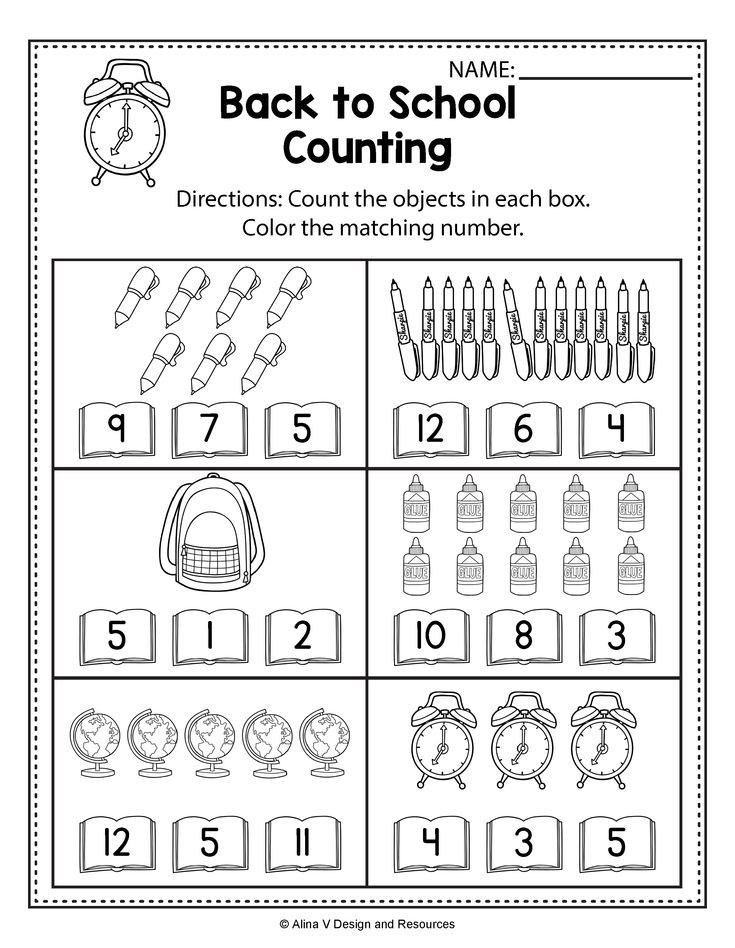 nine0003
nine0003
Test your knowledge
If you would like to test your knowledge on the topic of this lesson, you can take a short test consisting of several questions. Only 1 option can be correct for each question. After you select one of the options, the system automatically moves on to the next question. The points you receive are affected by the correctness of your answers and the time spent on passing. Please note that the questions are different each time, and the options are shuffled.
Statistics Full screen
Kirill
← 2 Advantages and disadvantages 4 Learning numbers →
Teaching children to count
Along with such skills as reading and writing, the ability to count is very important. Despite this, many parents prefer to focus their efforts on teaching their child other skills. However, we do not advise you to delay this, because early learning to count will serve your child as an excellent service in the future.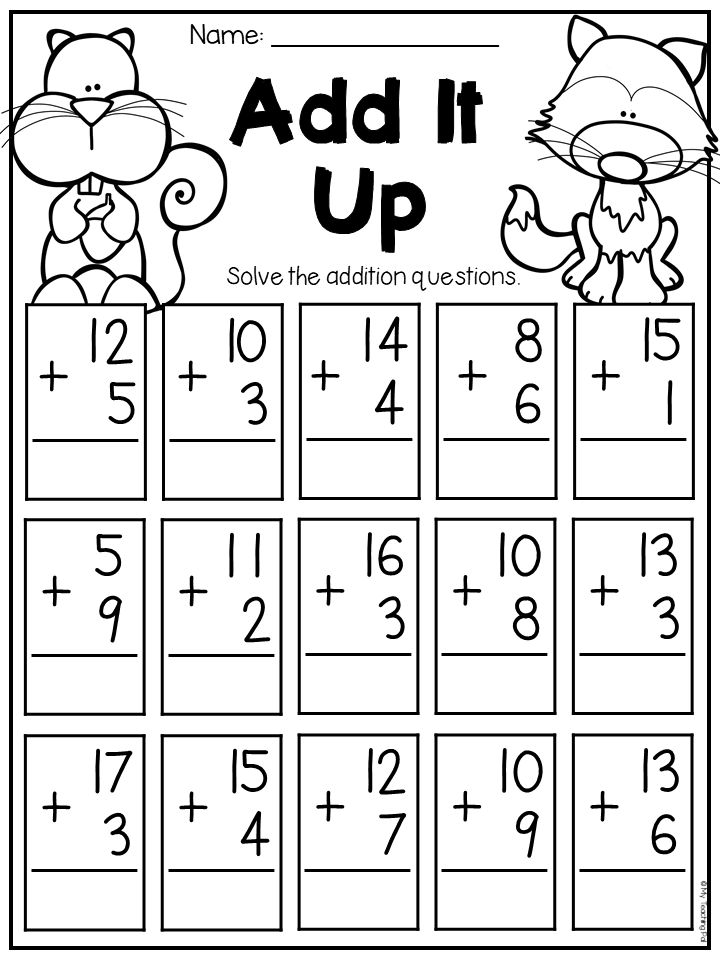 nine0003
nine0003
In favor of this, we will give several arguments, and at the same time answer the question: why does a child need to be able to count at all?
Contents:
- Why is it important to teach your child to count
- Features of teaching children to count
- Stages of teaching children to count according to A. M. Leushina
- When to start teaching children to count. Initial teaching methods
- How to explain to a baby the concept of the number
- Quotes of famous people about the ability to count
Why it is important to teach a child to count
One can talk endlessly about the benefits of reading, but we will only point out the main reasons and benefits of teaching a child to count:
- Mathematical calculations are considered one of the highest functions of the human brain. Only humans can count. Mastering counting skills has a beneficial effect on brain development.
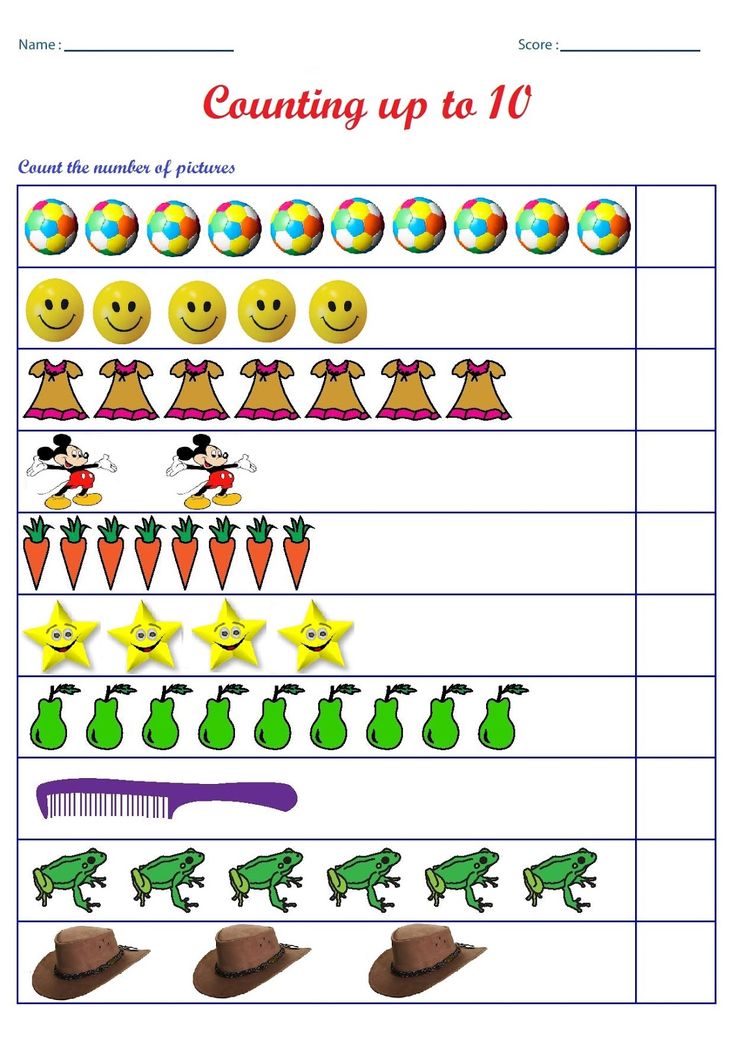
- Mastering counting skills develops mathematical thinking and thinking in general. nine0010
- Learning to count instills an interest in mathematics, which means that from an early age you can prepare a child to study in a mathematical class and participate in arithmetic Olympiads (unless, of course, interest is maintained over time and does not disappear).
- Mastering counting skills contributes to the development of memory, logic and attention.
- The ability to count is always useful in life, because many professions, and life situations often require a person to be able to count. nine0010
This list can be continued, but the bottom line is that the development of numeracy is part of the full and harmonious development of the child's personality. It is extremely important that parents develop their child in different directions during upbringing, and counting is one of those.
But how do you start developing your baby's first counting skills? Are there any rules to follow? We will answer these questions in the next section.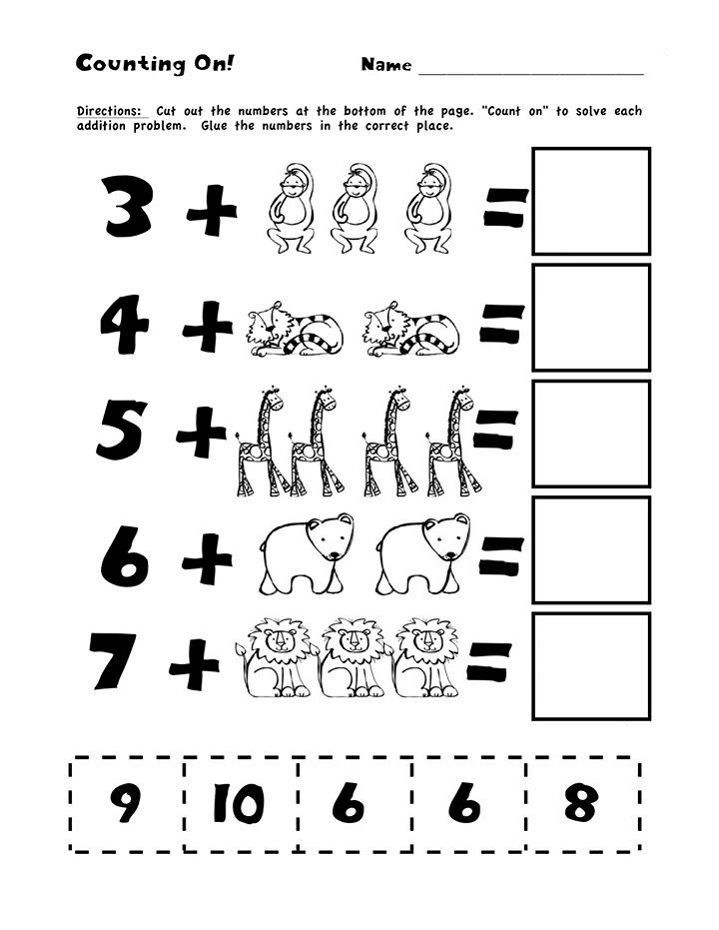
Features of teaching children to count
Unfortunately, there is no consensus on teaching children the science of counting. For example, Anna Mikhailovna Leushina, a well-known teacher, doctor of pedagogical sciences and a recognized specialist in preschool education, believed that one should not rush to learn counting at all, and one should learn to count only after mastering the simplest operations on sets.
The fact is that the account is such an activity that has its own specific features, namely: the goal, means, methods of implementation and results, expressed in the form of a final number as an indicator of the power of the set. nine0003
The meaning of counting as an activity is to establish a one-to-one effect between the elements of a certain set and the numbers of the natural series as a standard set of numbers, where all these numbers reflect a certain class of sets.
A huge number of psychological and pedagogical research, carried out at one time by such specialists as V.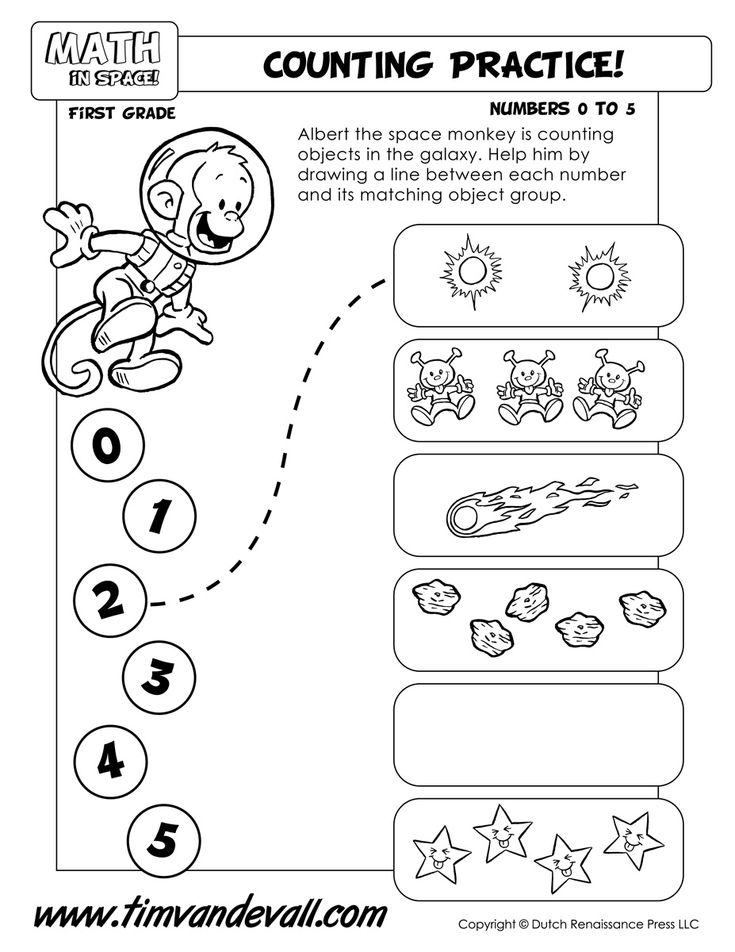 V. Danilova, G. S. Kostyuk, A. M. Leushina and others, showed that children begin to master the account gradually, and this process itself passes a number of stages. nine0003
V. Danilova, G. S. Kostyuk, A. M. Leushina and others, showed that children begin to master the account gradually, and this process itself passes a number of stages. nine0003
Stages of teaching children to count according to AM Leushina
It is always necessary to teach children to count from practical operations with sets, their splitting into components and comparison of adjacent sets. Account activity can be divided into the account stage and the total stage. Based on this, there is a correlated account and a final account. Correlated account, i.e. the process of counting, expressed in naming a number, is much easier for children to master, and it is more difficult to master the result of counting.
Thus, AM Leushina identified six basic stages in the development of counting skills in children. The first two stages are considered preparatory. Passing them, children carry out operations with sets without using numbers. The quantity is estimated by means of the words “none”, “one”, “many”, as well as “more”, “less” and “equally”.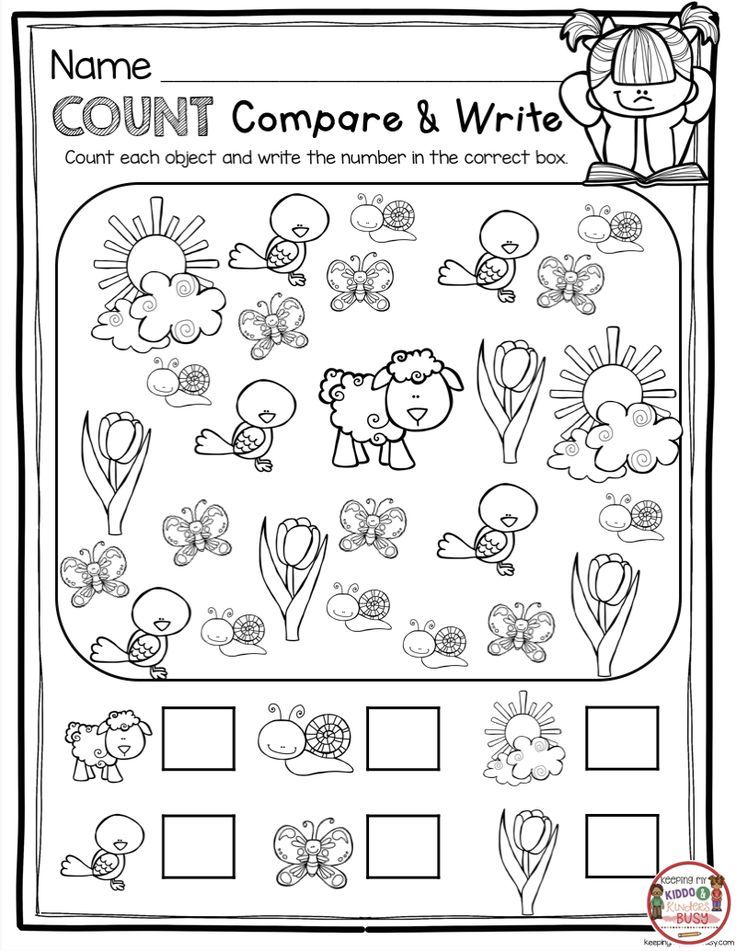 In other words, the first two stages are pre-numeric stages, and the other four are numeric. Let's talk in more detail about each of the stages. nine0003
In other words, the first two stages are pre-numeric stages, and the other four are numeric. Let's talk in more detail about each of the stages. nine0003
First stage
Typically, the first stage corresponds to the second and third years of a child's life.
The purpose of this step is to familiarize yourself with the structure of the set.
The main methods of learning are the selection of components in the set, as well as the compilation of a set of elements. At this stage, kids compare one and many.
The second stage
The second stage refers to the same age period. But the difference with the first is that kids learn to count by going through special math classes. nine0003
The purpose of the stage is to teach the child to compare element by element adjacent sets - sets that differ in the number of components by one unit.
The main methods of learning are comparison, application and overlay. Thanks to them, the child masters the skill of establishing equality from inequality by adding or eliminating one element.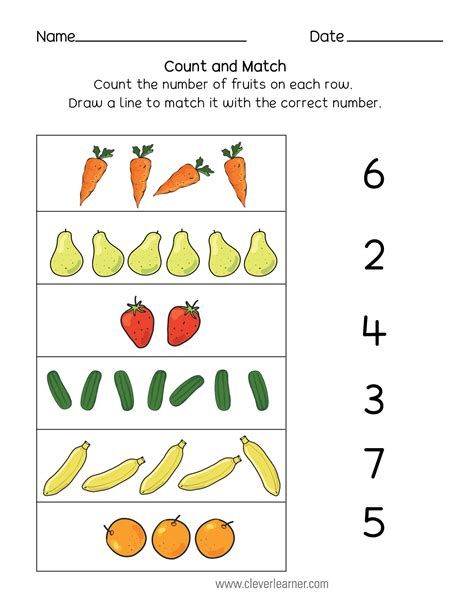
The third stage
The third stage corresponds to the fifth year of life.
The goal is to familiarize the child with the formation of numbers. nine0003
At this stage, children learn to compare adjacent sets and establish equalities, as a result of which they master the result of counting, indicated by a number. It turns out that at first the baby learns to count, and then he understands its result - the number.
Fourth stage
The fourth stage is realized in the sixth year of life.
The goal is to introduce the child to the ratio of adjacent numbers of the natural series. As a result, he comes to understand the basic principle, according to which each number has its place, each next number is more than the previous one by one, and each previous one is one less than the next. nine0003
Fifth stage
The fifth stage corresponds to the seventh year of life.
The goal is to explain to the child the group count (counts in groups of 2, 3 or 5).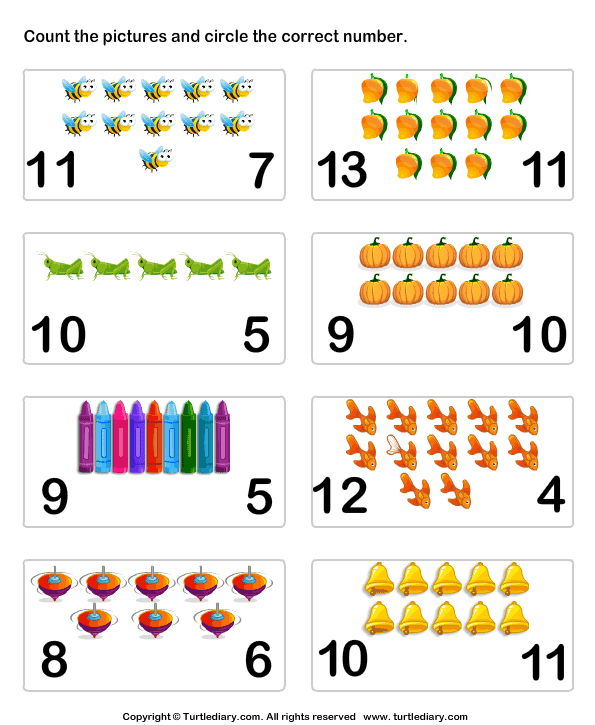 As a result, the child begins to master the decimal system of calculus.
As a result, the child begins to master the decimal system of calculus.
In most cases, at the fifth stage, preschoolers finish learning to count.
Sixth stage
The sixth stage also corresponds to the seventh year of life.
Aimed at improving children's skills in decimal calculus. The child learns how the numbers of the second ten are formed, begins to understand how any number is formed, that there are ten units in one ten, that when ten units are added to one ten, two tens are obtained, etc. nine0003
These are the main stages of teaching children to count, established by AM Letushina. If you take this information into account and build the process of teaching your child to count, guided by it, the material will be absorbed much more efficiently, and the results will please you and your child.
Now it is worth talking about when you can directly start practical actions, and what methods are most effective at each age.
When to start teaching children to count.
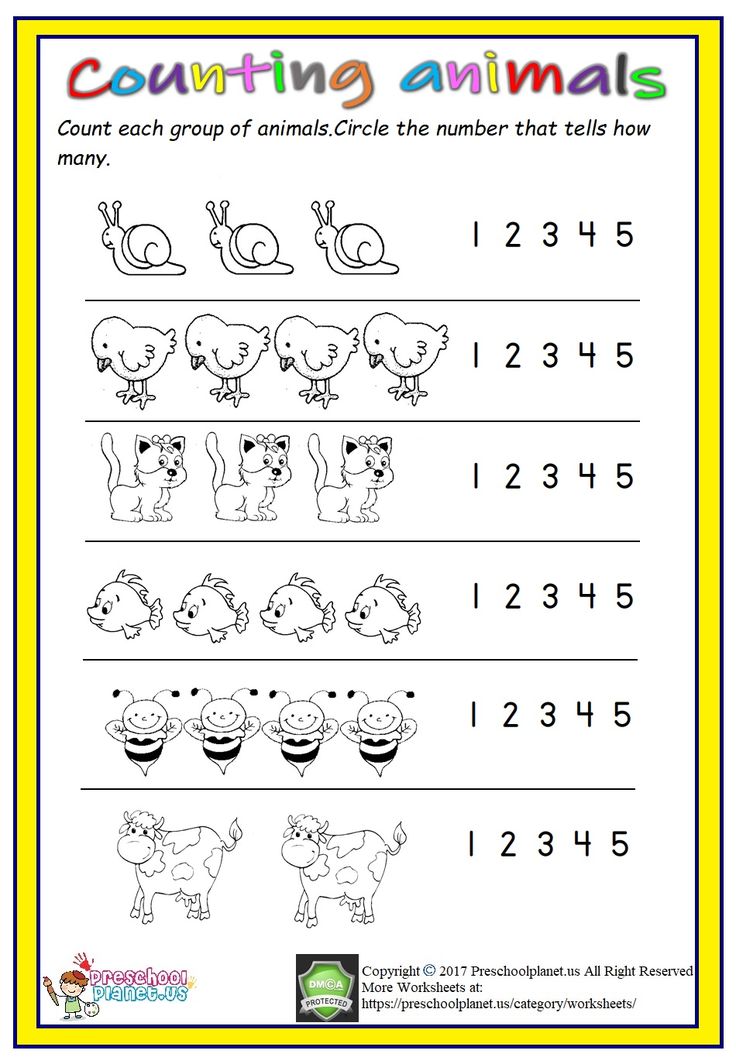 Initial teaching methods
Initial teaching methods As it has already become clear, it is better not to hurry with learning to count, but it is still necessary to prepare the baby little by little to master the count. Here's a system you can follow:
- While the baby is not a year old. The child's brain is not yet ready for the full perception of information, so there is no point in teaching counting. However, you can start preparing it.
- Period from 1 to 3 years. Introduce the little one to what is little and what is much. For example, one toy is in the pen, but there are many toys in the box. Use dolls, nesting dolls, cars and other toys that fit easily in a child's hand. It is not necessary to conduct classes for a long time, otherwise the child will quickly get tired. As soon as you see that interest is gone, take up another activity. nine0010
- Period 3 to 4 years. Go to comparison. In the process, you can use absolutely everything that can be compared.
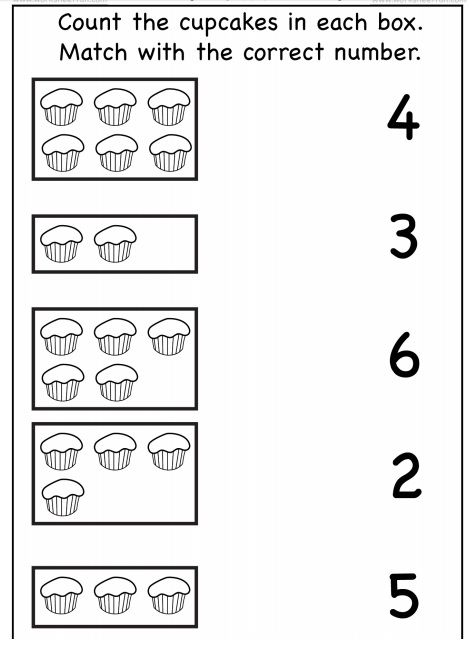 Offer your baby objects of different sizes and in different quantities.
Offer your baby objects of different sizes and in different quantities. - Period 4 to 5 years. Start counting a little. It is convenient to start with picture cards so that the child learns the relationship between the concept of the number and the number of objects. Provide as much visual information as possible - show cards with the number of objects and name their number. In addition, introduce the child to the numbers, again showing the cards. Bending and unbending your fingers, learn to count to ten. Use "Stoschet Zaytsev" in your work. Explain the numbers figuratively: the number "1" looks like a thin man, the number "2" looks like a swan, etc. nine0010
- Period 5 to 6 years. At this stage, move on to solving simple problems. Strive to convey to the child information about the quantitative meaning of the number, i.e. three is three ones, four is four ones, and so on. Buy a number line from a bookstore and show which numbers are bigger, which ones are smaller, which ones are ahead, which ones are further, etc.
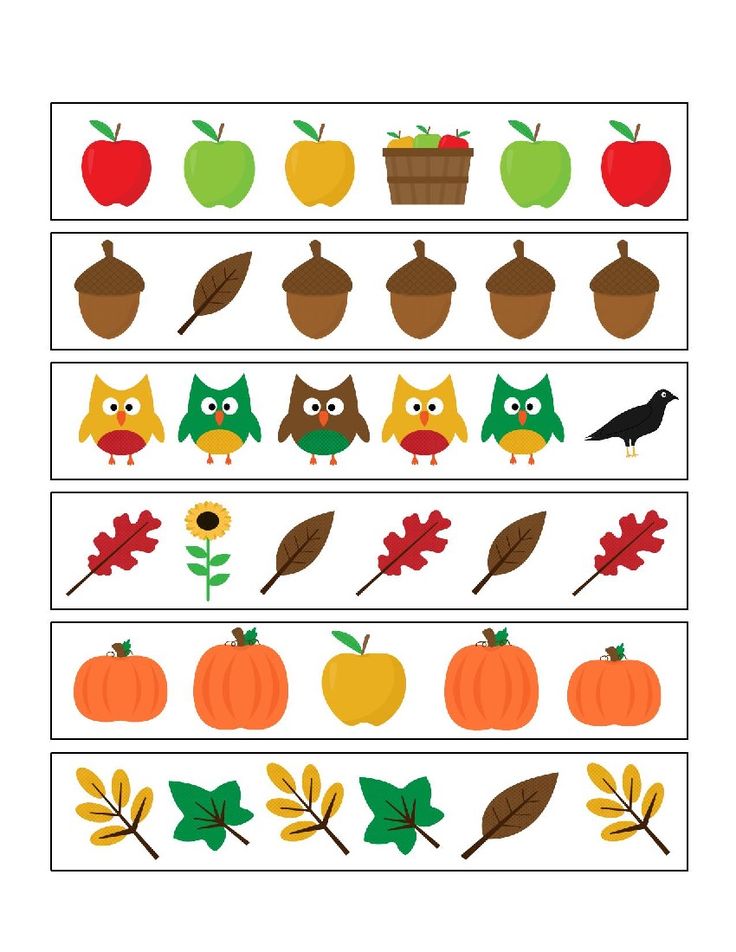 Be sure to spend time solving problems like “How many bears?”, “Which is more: cubes or balls?” etc. nine0019
Be sure to spend time solving problems like “How many bears?”, “Which is more: cubes or balls?” etc. nine0019 - Read nursery rhymes (some can be memorized). The counters are most effective - they can become the basis for understanding the concept of number.
 The counting rhymes are extremely simple: “One, two, three - look at your mother”, “One, two - we go for firewood”, etc. Even before the moment when the child notifies you that he has four cubes, he will already be able to pronounce counting rhymes, thereby studying the pronunciation of numbers and recognizing their features. nine0010
The counting rhymes are extremely simple: “One, two, three - look at your mother”, “One, two - we go for firewood”, etc. Even before the moment when the child notifies you that he has four cubes, he will already be able to pronounce counting rhymes, thereby studying the pronunciation of numbers and recognizing their features. nine0010 - Compare pictures where there are similarities and differences in terms of the number of objects depicted in them. Ask the child what is the difference between the pictures, and also give him the task to independently draw on paper a different number of objects - houses, animals, trees, people, etc.
- Use counting sticks. Ask the little one to put three sticks on the table, and then ask how many sticks are in front of him. You can spread the sticks on different sides of the table and ask how many sticks are on which side. Do as many manipulations with these sticks as possible. nine0010
- Everywhere and always count: climbing stairs, eating porridge with spoons, collecting a pyramid of cubes, bending and unbending fingers on arms and legs, etc.
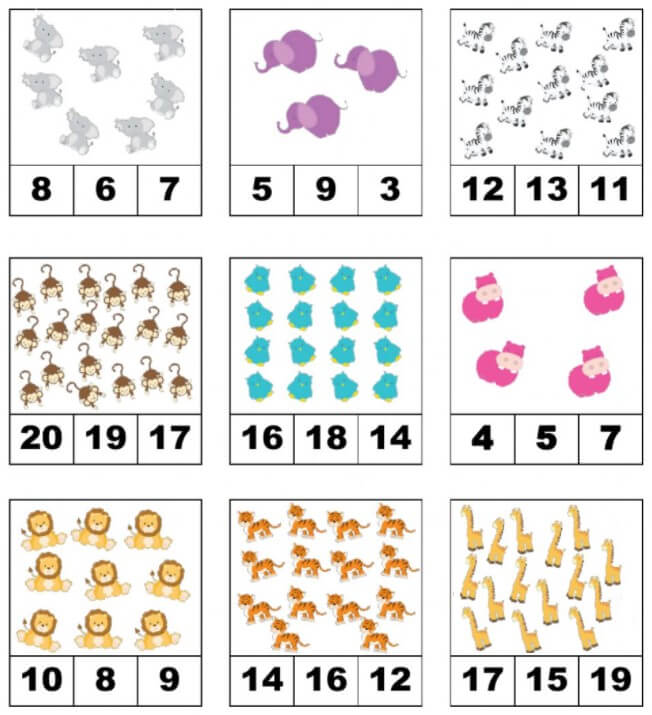 Try to draw your child's attention to what is happening around, wherever you are and whatever you do. And always be interested in how much of this or that he sees next to him.
Try to draw your child's attention to what is happening around, wherever you are and whatever you do. And always be interested in how much of this or that he sees next to him. - Even at the smallest age, one can not only name numbers, but introduce elements of mathematical operations. For example, like this: “There are five benches in the yard, you and I have already sat on three. How many benches have we not sat on yet?”, or “Look, there are only ten steps, here we have passed one. How many steps are left”, etc. Let the baby still not understand what you want from him, but he will subconsciously perceive the incoming information, which will certainly manifest itself in the future. nine0010
- Firstly, the presented section of our course is devoted to teaching counting to children, mainly preschool and primary school age.
- Secondly, many technical problems have already been discussed in the first lessons of this section, and we have given a lot of information on how to avoid the most common mistakes that cause technical problems.
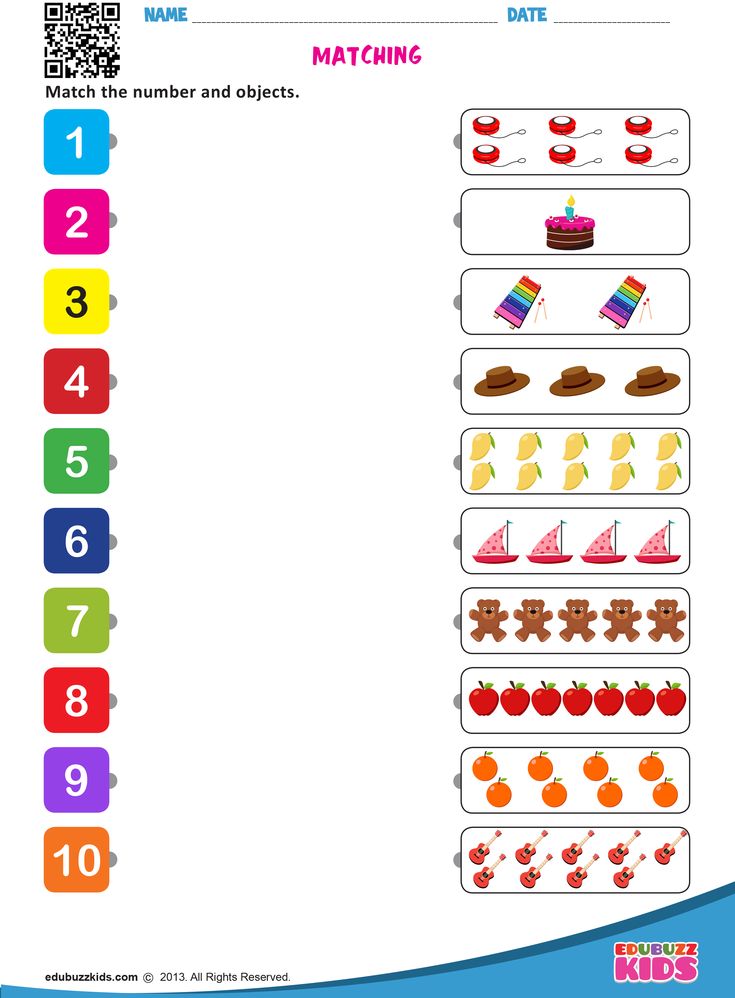 nine0010
nine0010 - Thirdly, the psychological aspect is important because already at a young age it is possible to trace whether the child has difficulties in mastering the material, whether he has a craving for mathematical knowledge, what he gravitates more to - to the humanities or the exact sciences.
Remember that you need to teach counting only gradually and systematically. In future lessons, we will talk about the methods of teaching counting in more detail. In the meantime, our task is to understand the principle of future actions.
And summing up the introductory lesson, we want to tell you about how you can explain to a child what a number is.
How to explain the concept of number to a child
The concept of number can safely be called the basis of counting and mathematics. But it, like any concept from the field of mathematics in general, is an abstract category. For this reason, difficulties often arise when explaining to a child the essence of a number. nine0003
To make this easier, here are some good tricks:
Understand the most important thing for yourself: learning to count should be fun for the child, and he should enjoy it. Therefore, in no case do not force the child to study the account and numbers. It is better to turn all activities into a game. It is also very important to show the growing little man why you need to be able to count and what is the use of it.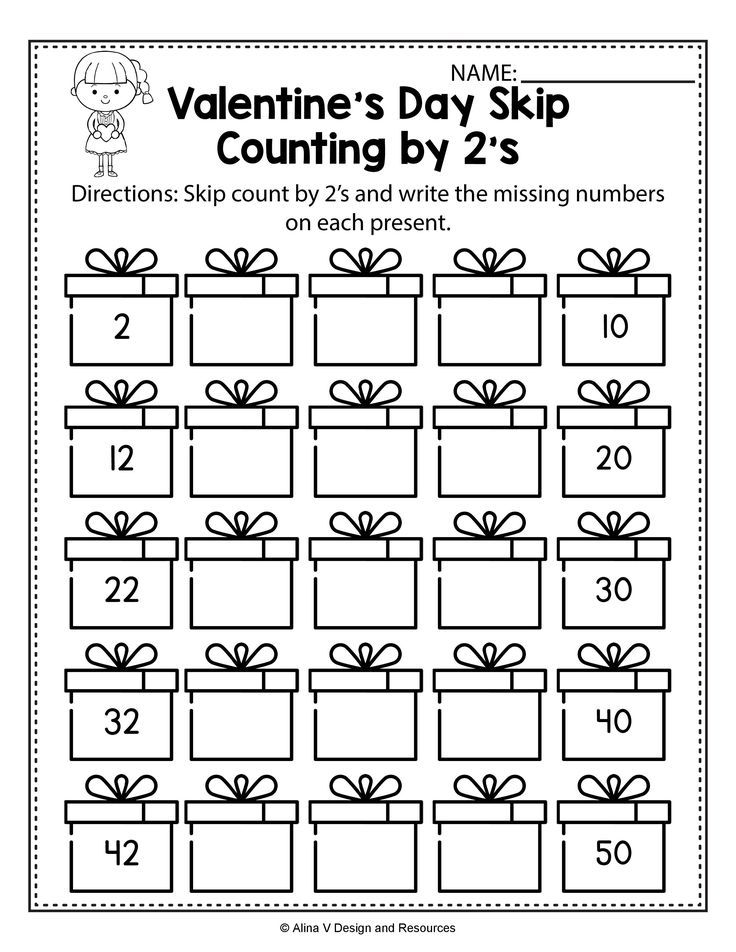 However, we will talk about all this later.
However, we will talk about all this later.
In the second lesson, you will learn the most common approaches to learning to count, some exercises and the secrets of successful learning. nine0003
Lesson 1. The most common methods of teaching children to count
The ability to count makes the life of even an adult much easier, because it allows you to be more efficient at work, save time, and achieve better results. As for children, oral counting skills are needed so that they can more successfully master the exact sciences when they study at school, and also competently operate with objects of the world around them.
As it has already become clear, it is necessary to think about how to teach your precious child to count long before the moment when it is time to go to the first grade. It is precisely because of the need for appropriate teaching methods and the relevance of this issue in general that not only specialists in preschool education, but also parents themselves, for many years, learning from their mistakes, came up with various ways to teach children to count.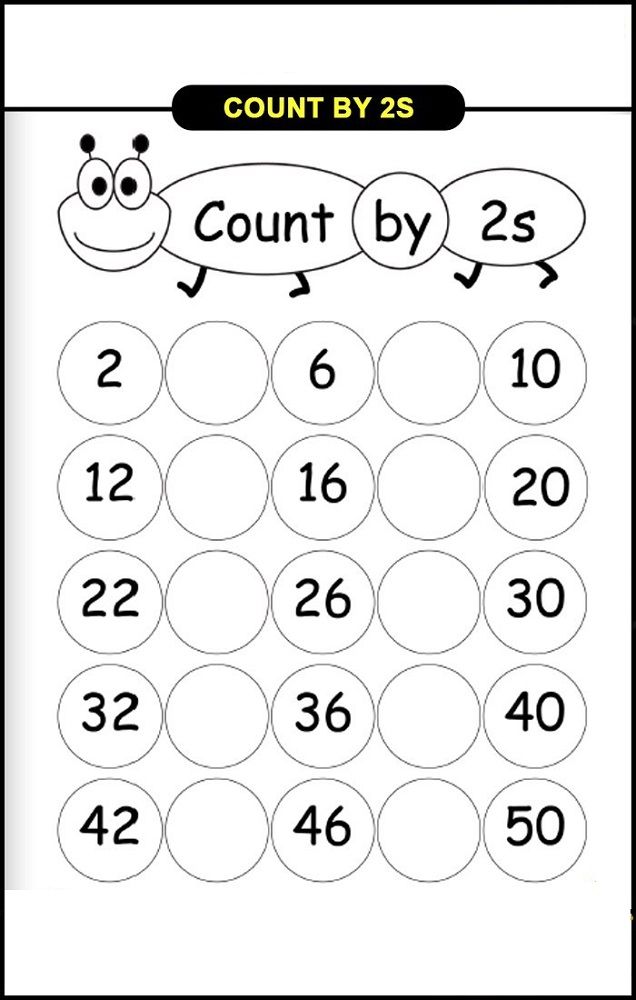 nine0003
nine0003
Lesson 2. Advantages and disadvantages of the main methods of teaching children to count
In the second lesson we talked about the most common methods of teaching children to count. In the same lesson, we will analyze in more detail the methods of Nikolai Zaitsev and Glen Doman we mentioned earlier, talk more specifically about counting on fingers and mental counting, and also point out the pros and cons of all these methods.
We have already understood that the ability to count, together with the ability to read and write, belongs to the first step in home schooling. It is likely that you have already tried your hand at teaching a child to count, and most likely noticed that success can be achieved even without special didactic tools and pedagogical skills. nine0003
Lesson 3. Preparing for counting for the little ones: tips, activities, games, books
Any child can be taught to count. The only question is how to do it.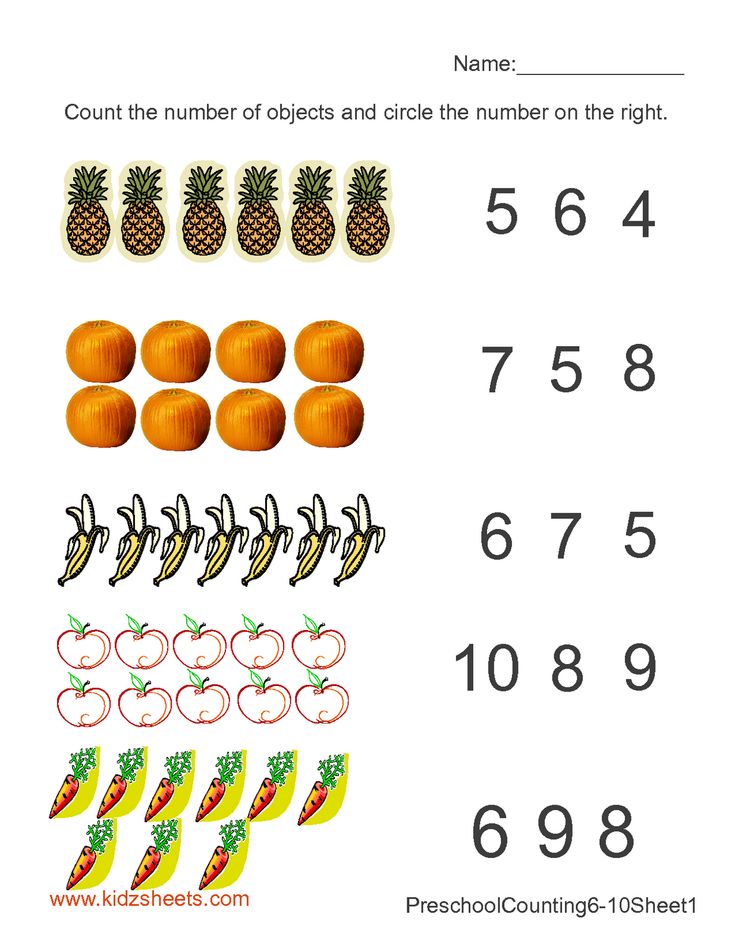 Despite the fact that counting (including quick calculations) is not a serious difficulty, some children are given it almost in the blink of an eye, while others understand the information with difficulty. Not knowing how to convey seemingly elementary things to the baby, some parents resort to all sorts of tricks, while others give up altogether. In the matter of the full-fledged upbringing and development of the personality, neither one nor the other is completely suitable, and there is only one way out of the situation - to know how, when and what to do. We will talk about this. nine0003
Despite the fact that counting (including quick calculations) is not a serious difficulty, some children are given it almost in the blink of an eye, while others understand the information with difficulty. Not knowing how to convey seemingly elementary things to the baby, some parents resort to all sorts of tricks, while others give up altogether. In the matter of the full-fledged upbringing and development of the personality, neither one nor the other is completely suitable, and there is only one way out of the situation - to know how, when and what to do. We will talk about this. nine0003
Lesson 4. Studying numbers
Any teaching of counting and numbers should always begin with the assimilation of elementary quantitative concepts, such as "a lot", "little", "more", "less", "equally", etc. . And children easily understand them even at a toddler age. Your main parental task is simply to help them with this. The skills of quantitative comparison can be formed in the process of everyday life.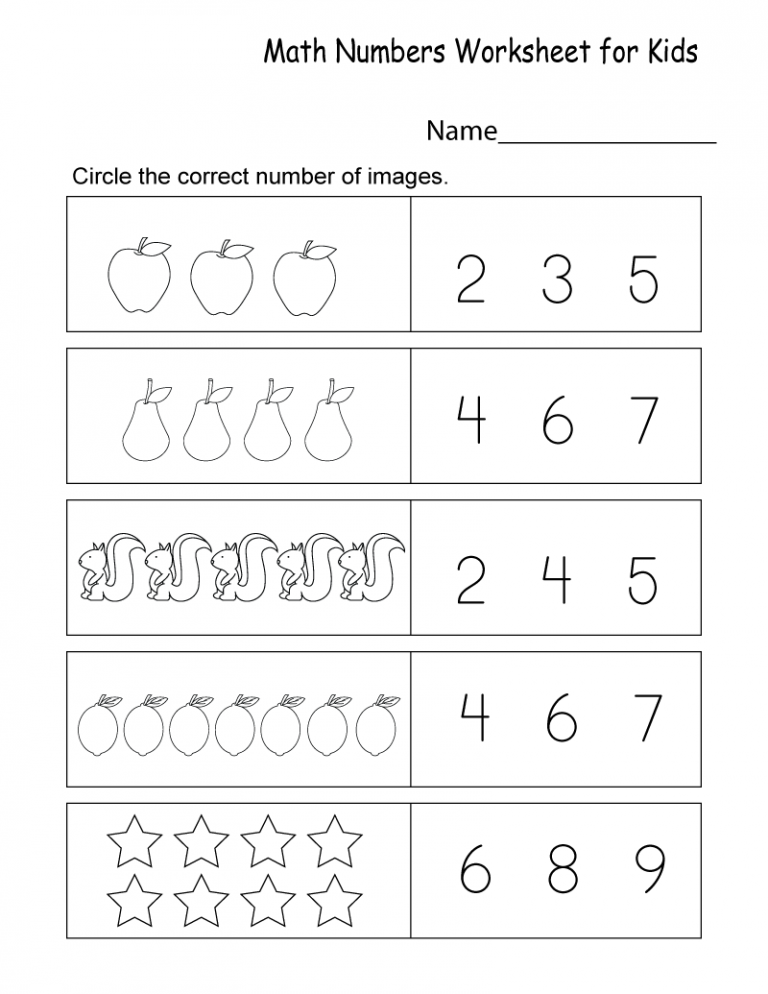 So, together with the baby, you can compare the number of sweets or sandwiches, apartments on the playgrounds and steps on the stairs, pigtails and bows for girls, etc. However, it is not necessary to take on large groups of objects at once, because everything should start small. nine0003
So, together with the baby, you can compare the number of sweets or sandwiches, apartments on the playgrounds and steps on the stairs, pigtails and bows for girls, etc. However, it is not necessary to take on large groups of objects at once, because everything should start small. nine0003
After mastering quantitative concepts, it's time for the baby to get acquainted with the world of numbers. As you already know, this should happen in an interesting and exciting way for the child, for which the methods we discussed in the first lessons should be applied.
Lesson 5. Principles of learning to count. Counting up to 10, up to 20 and up to 100. Counting in a column
As soon as children reach the age of 2-3 years, it is time to deal with counting more seriously with them than just telling them what is "little" and "a lot" and how much will be "2 + 2". This age period is characterized by maximum cognitive activity, and cognitive abilities reach their peak.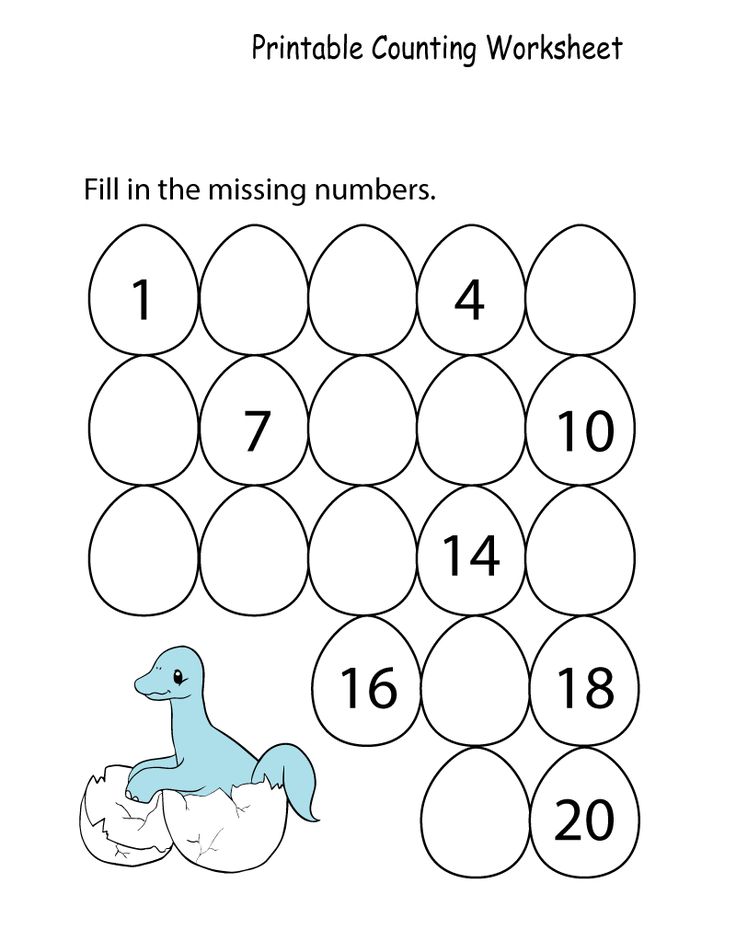 That is why the children themselves are distinguished by curiosity and the desire to learn something that they did not know how to do before. As a result, the incoming information falls on fertile ground, and then begins to be actively used by children in their interaction with surrounding objects and people. nine0003
That is why the children themselves are distinguished by curiosity and the desire to learn something that they did not know how to do before. As a result, the incoming information falls on fertile ground, and then begins to be actively used by children in their interaction with surrounding objects and people. nine0003
But when teaching a child to count, one should always keep in mind that some data can be somewhat problematic to assimilate. The child may, for example, miss some numbers from the number series or completely change their order. The reason for this is the selectivity of children's memory - for the most part, it lingers in what caused an emotional response in the mind, in particular, interest. Therefore, training should be built with a foundation on several fundamental principles that you definitely need to get acquainted with. nine0003
Lesson 6. Studying the multiplication table
The numbers are studied, the basic mathematical concepts are mastered, the child freely counts up to a hundred, adds and subtracts - all this suggests that it is time to start studying the multiplication table.
The multiplication table can be given to a future student more difficult than the basics of mathematics, and as a parent interested in the development of his child, you are obliged to support him in this matter. As before, you will need a fair amount of patience and perseverance. nine0003
Lesson 7. Eliminating problems with mathematics
In this lesson, we will try to consider not so much the problems with the technical side of mastering mathematical knowledge, but the problems of a more global, one might say, psychological nature.
There are several reasons for this. You will learn about them in this lesson.
Lesson 8. How to make a child fall in love with mathematics
You can endlessly engage in mathematics with your child, learn the multiplication table, solve hundreds of examples, but still you can’t make him begin to have warm feelings for this subject. For many children, mathematics is not only difficult, but also a very boring subject.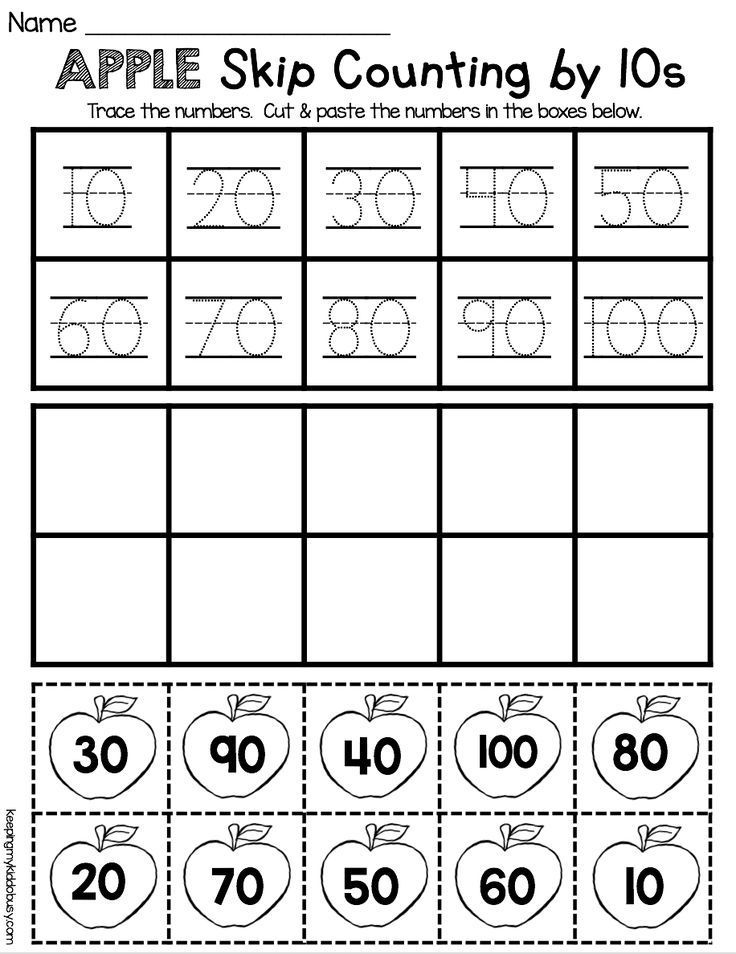 As a result, numbers, examples and tasks are not interesting for children, and are given to them with great difficulty. Many parents in such cases come to the conclusion that their children have a humanitarian mindset, but not always the reason lies in the lack of abilities for technical sciences and all kinds of calculations. nine0003
As a result, numbers, examples and tasks are not interesting for children, and are given to them with great difficulty. Many parents in such cases come to the conclusion that their children have a humanitarian mindset, but not always the reason lies in the lack of abilities for technical sciences and all kinds of calculations. nine0003
As you know, attitude towards something automatically affects the desire to deal with it. Remember yourself: how often does it happen that you don’t like something, as a result of which, even if you have to interact with it (do some things, solve some tasks, communicate with specific people), you show absolutely no enthusiasm. The situation is exactly the same in the context of our topic. It is likely that the child's failures in mathematics are due to the fact that he simply does not like it. And in order to remedy the situation, you need to know the ways by which you can instill in your child a love of mathematics. Remember that, first of all, your task, as a parent-teacher, is to convey to the mind of the child that mathematics can be both interesting and useful, and in general, you can enjoy it.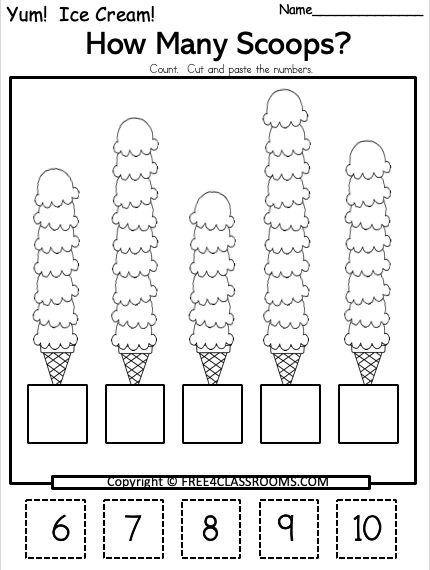 nine0003
nine0003
Lesson 9. Basic math tricks
Having covered the most important questions and the most difficult moments in the process of teaching children to count, now we can afford to relax a little. Today we will get acquainted with ten simple mathematical tricks, which, firstly, will help your child realize that mathematics is simple and interesting, and secondly, will teach him to enjoy computing. However, it will be useful for you, as parents, to brush up on arithmetic knowledge and, perhaps, discover something new for yourself. nine0003
The following math tricks will improve your precious child's skills and speed up their mental math skills.
Next, we suggest taking a break and getting a charge of additional motivation for taking the course.
Quotes from famous people about numeracy0005 quotes from famous people
about numeracy:Everything that is known has a number, because it is impossible to understand anything, or to know without it.
Pythagoras
A purely mathematical mind will work correctly only if all definitions and beginnings are known to it in advance, otherwise it gets confused and becomes unbearable, because it works correctly only on the basis of clearly formulated beginnings.
nine0002
Blaise Pascal
Mathematics contains not only truth, but also the highest beauty - cold and austere beauty, like the beauty of a sculpture.
